- THE PRINCESS PASSPORT
- Email Newsletter
- Yacht Walkthroughs
- Destinations
- Electronics
- Boating Safety
- Ultimate Boating Giveaway


Top 15 Trawlers for 2023
- By Patrick Sciacca
- October 13, 2023
For every shoe, there’s a foot, and for every boating enthusiast, there’s a yacht. For those individuals who like to cruise their yachts across blue water, spend months on board or voyage to remote beaches and quiet coves, a trawler yacht is the go-to vessel choice. But even within this yacht genre, there are many options. For example, there are some mighty midsize trawlers that are easily capable of transatlantic crossings for an adventurous couple, and then there are megayacht-size craft with next-level amenities that require extra crew. Some trawler-yacht builders offer significant customization and others work from a fixed options list. There are single-engine trawlers and twin-engine trawlers. One thing that is common is that these trawler yachts are designed from the ground up for yachtsmen with wanderlust in their hearts.
Top Trawlers
The following 15 trawlers are all vessels we’ve written about. They are listed in no particular order.
- Nordhavn 96 : Built for an owner who desired to self-sufficiently while cruising the world, literally.
- Beneteau Grand Trawler 62 : This trawler can travel nonstop for 1,000 nautical miles.
- Kadey-Krogen 52 : This twin-engine-capable, all-oceans trawler is a solid fit for voyaging cruising couples.
- Bering Yachts B76 : The B76 is the builder’s first fully custom trawler in this size range.
- Ranger Tugs R-43 Command Bridge : This vessel is equally comfortable at a 7-knot stroll or an 18-knot jog.
- Beneteau 48 Swift Trawler : Based on the builder’s Swift Trawler 47, this yacht has a resin-infused fiberglass hull.
- Kadey-Krogen 50 Open : The 50 Open can cruise at 6 knots nonstop for 5,000 nautical miles.
- Outer Reef 620 Trident : It has a three-stateroom layout and optional 600 hp Cummins diesels.
- Grand Banks 60 Skylounge : This yacht is efficient across a variety of cruising speeds.
- Krogen Express 52 : Headroom to spare, two staterooms, a chef-ready galley and long range define this trawler yacht.
- Grand Banks 85 Skylounge : Grand Banks’ V-warp hull form makes for a level running attitude, seakindliness and long range.
- Vicem Yachts 82 Classic : Construction is in cold-molded, strip-planked mahogany with epoxy.
- Outer Reef 610 Motoryacht : Power on this Outer Reef is a pair of 500 hp John Deere 6090 diesels.
- Nordhavn 59 Coastal Pilot : Did someone say this is a 20-knot Nordhavn?
- Marlow 58E : A high level of customization and admirable performance are at the heart of the Marlow 58E.
Nordhavn 96
The Nordhavn 96 is the yacht builder’s second-largest yacht its 17-model fleet, which ranges from 41 to 120 feet length overall. (There is a new 112 on the drawing table.) The builder says the N96 is based on its earlier 86-footer with a 10-foot cockpit extension, which increases both main-deck, skylounge and below-deck volume. The N96 we reviewed was built by an owner who previously had an 86-foot Nordhavn, but with his plans for extended cruises to remote destinations, the 96 was the right size for his voyaging plans. In fact, since the owner took delivery of the boat, it has been on a continuous circumnavigation.
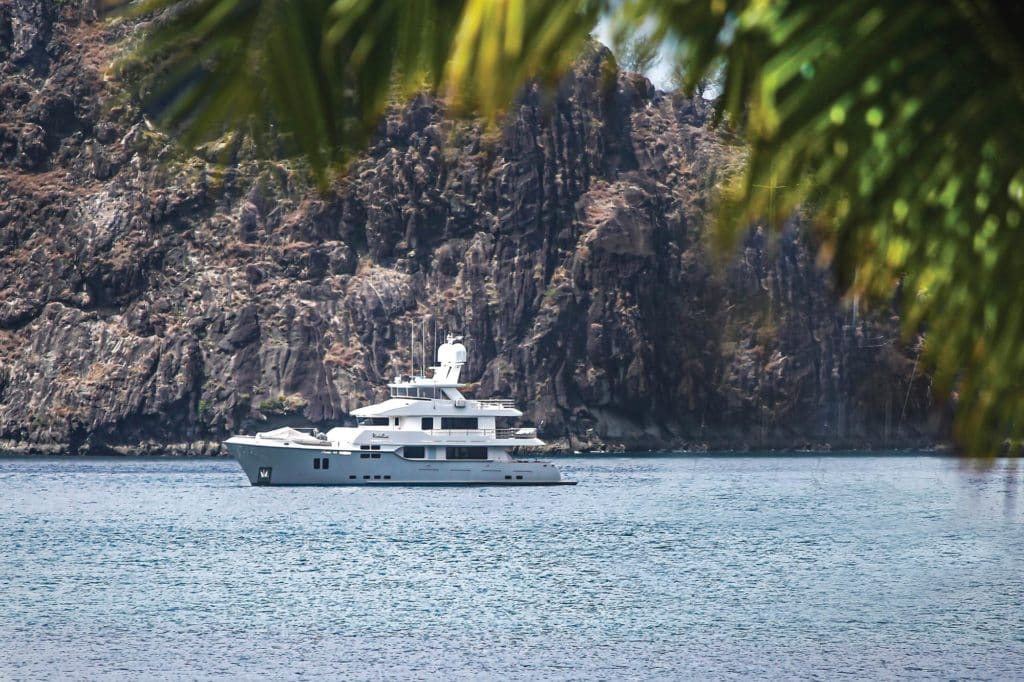
Quick Specifications
| 96’7” | |
| 24’0” | |
| 7,000 Gal. | |
| 900 Gal. | |
| 8’2” | |
| 400,000 lb. |
Beneteau Grand Trawler 62
Beneteau’s Grand Trawler 62 has 1,000-plus-mile range and 20-knot speed with twin 730 hp i6 MAN diesels . The Grand Trawler 62 is the builder’s flagship in its Trawler series, which also includes the Swift Trawler 35 , Swift Trawler 41 Sedan , Swift Trawler 41 Fly and Swift Trawler 48 . Small touches set the Beneteau Grand Trawler 62 apart. They include sea rails on all lockers to keep stowed food and gear in place, leather-wrapped interior handrails for security in a seaway, and leather drawer pulls like those found on larger yachts. Long-range cruising accommodations include a full-beam master stateroom aft, a forepeak VIP and twin-berth guest stateroom. A Quick X3 gyrostabilizer helps mitigate any potential rocking and rolling on rough days.
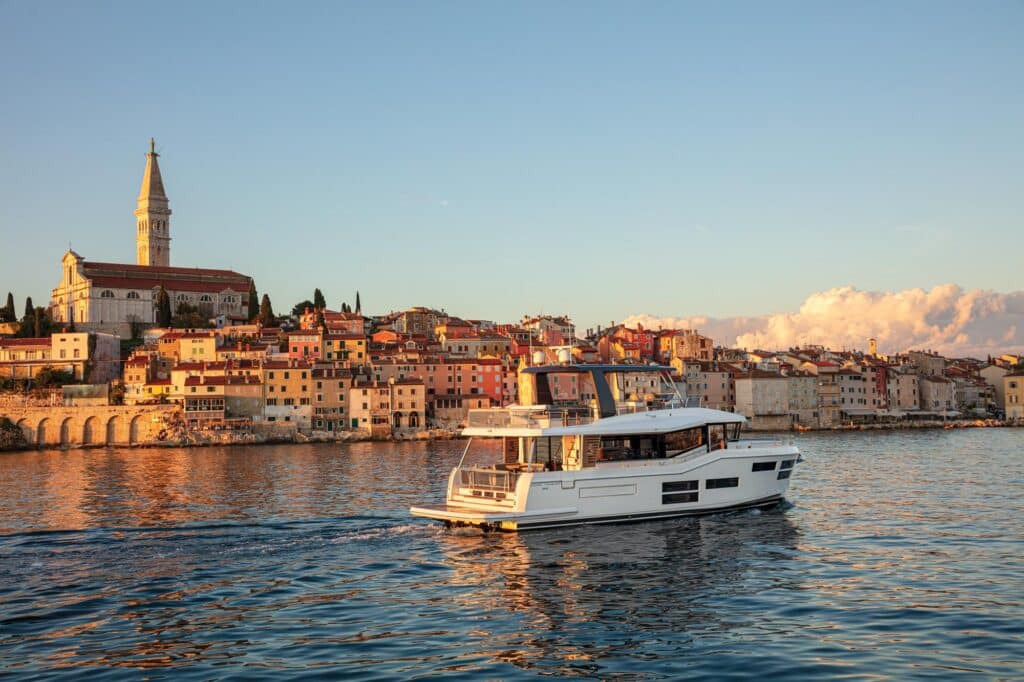
| 62’2” | |
| 17’10” | |
| 1,022 Gal. | |
| 222 Gal. | |
| 4’7” | |
| 61,729 lb. |
Kadey-Krogen 52
The Kadey-Krogen 52 is the trawler-yacht builder’s smallest offering in its raised-pilothouse series, complete with a Portuguese Bridge. Owners can choose from either a two- or three-stateroom layout, and between a single-diesel engine or twin-diesel engines, for owners seeking redundancy. The standard engine is a 231 hp John Deere diesel. With the single-engine setup, draft is 5’5” and with twins it’s a shallower 4’6”. At 6 knots, range is an ocean-crossing 4,850 nautical miles. At 7 knots, it’s 3,300 nm. At 9 knots, it 1,700 nm. The builder states, “The entire Krogen 52 is built from only three molded pieces for maximized structural integrity. There are no additional secondary bonds or caulk joints that can inevitably cause issues. All deck and superstructures are cored and vacuum-bagged to maximize strength while minimizing weight.” Additionally, six longitudinal stringers enhance overall strength.
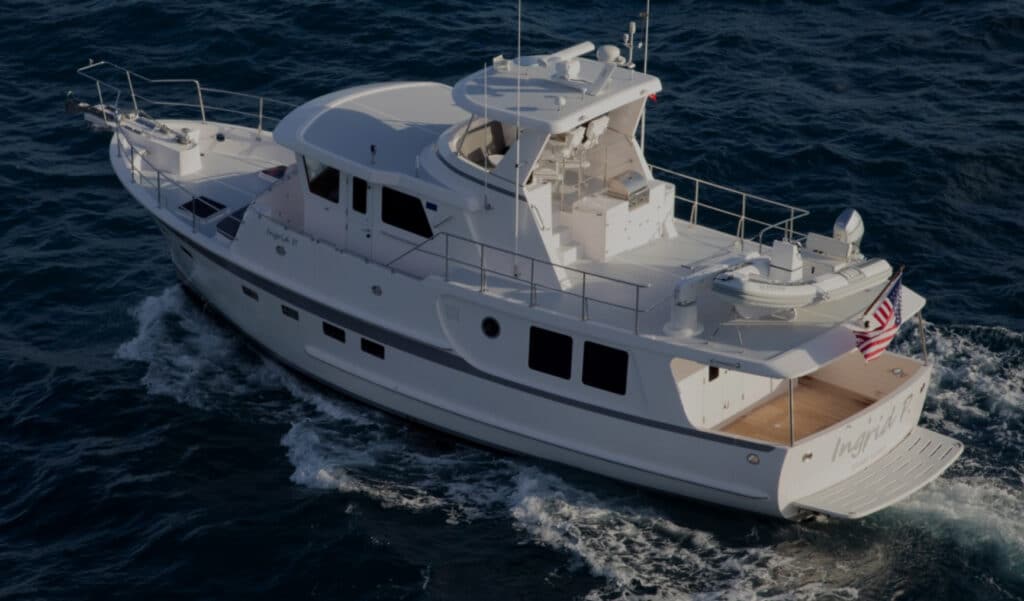
| 57’9” | |
| 17’9” | |
| 1,400 Gal. | |
| 400 Gal. | |
| 5’5” (single) 4’6” (twins) | |
| 70,000 lb. |
Bering Yachts B76
Lemanja is the first custom boat that Bering has built in this size range. The yacht is notable for its steel hull and aluminum superstructure, and for its 4,000-nautical-mile-plus range with its twin 404 hp Cummins QSL9 diesel engines. As rugged as the Bering 76 is built on the outside, it also offers homelike comforts in its skylounge inside, offering panoramic views out large windows surrounding the space. Sole-to-ceiling glass offers similar views in the open-plan salon. Accommodations are fox six guests in three staterooms with a master stateroom and two guest staterooms, plus crew accommodations. In addition to its traditional diesel engines, the B76 has a solar-rechargeable battery bank for hybrid propulsion.
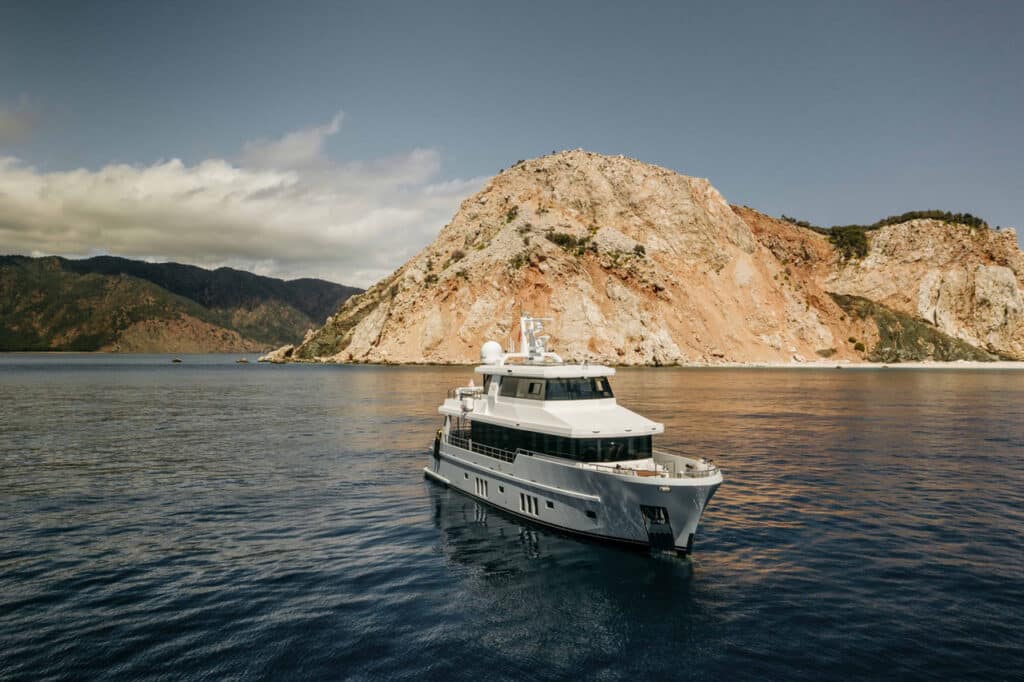
| 73’3” | |
| 19’3” | |
| 6,750 Gal. | |
| 946 Gal. | |
| 6’5” | |
| 287,000 lb. |
Ranger Tugs R-43 Command Bridge
The Ranger Tugs R-43 Command Bridge is a long-distance cruiser with creature comforts. Our expert found the R-43 Command Bridge to be a solid candidate to cruise The Great Loop . We agree. Twin Volvo Penta IPS450 pod drives give the boat efficient low and high cruise speeds at 7 and 18 knots, respectively. For those that have work during their cruise, the R-43 Command bridge’s master stateroom is set up with an office with a desk. Long trips require extra stowage and a way to clean salty clothes, so on the R-43 Command Bridge there is a washer, dryer, auxiliary refrigerator/freezer and stowage under the dinette, which rises on electric rams. Voyagers who buy a R-43 Commander Bridge can opt for a Factory Delivery Experience, which is three days of instruction on Puget Sound, and includes in boat systems, handling and maintenance.
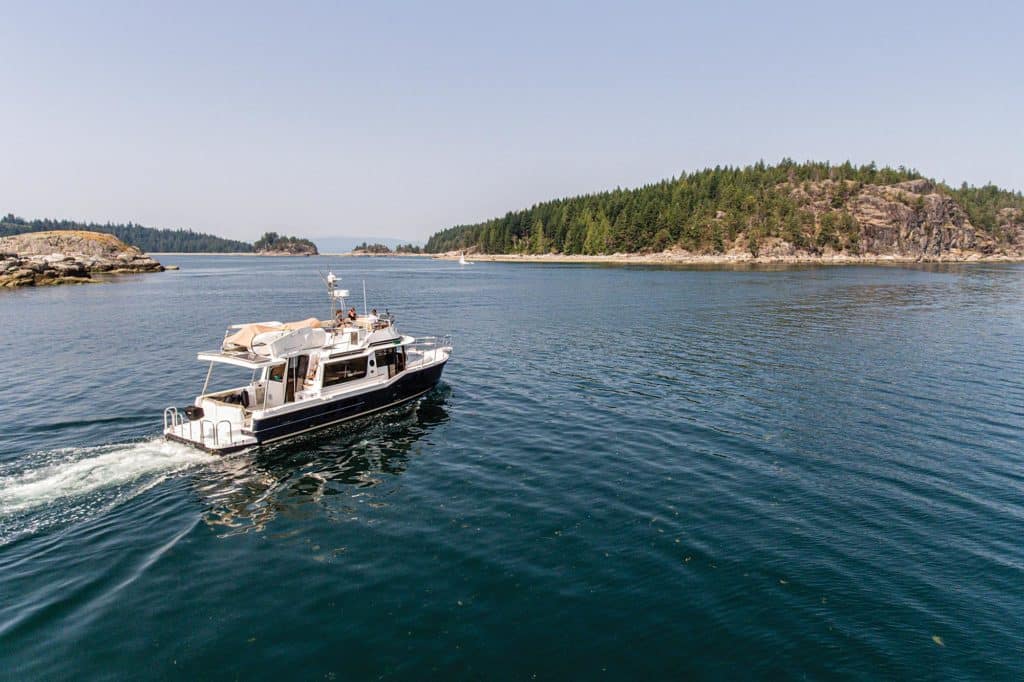
| 46’9” | |
| 14’ | |
| 300 Gal. | |
| 120 Gal. | |
| 3’6” | |
| 2/Volvo Penta IPS450s |
Beneteau Swift Trawler 48
The Beneteau Swift Trawler 48 has a 1,300-nautical-mile range at 8 knots, but can also speed away at 26 knots if the weather goes south in a hurry. Based on the builder’s 47-footer , the three-stateroom, two-head Swift Trawler 48 has a resin-infused fiberglass hull. Power is a pair of 425 hp Cummins diesels. The main-deck layout includes a galley aft setup, which is accessible to the cockpit. There, the seating and dining area can be fully enclosed, with tracks in place for side curtains. The helmsman is kept comfortable on long passages with a bolstered, pedestal bucket-style seat with a flip-up footrest. The Swift Trawler 48 we reviewed had upgraded 12-inch Raymarine HybridTouch displays (9-inch screens are standard).
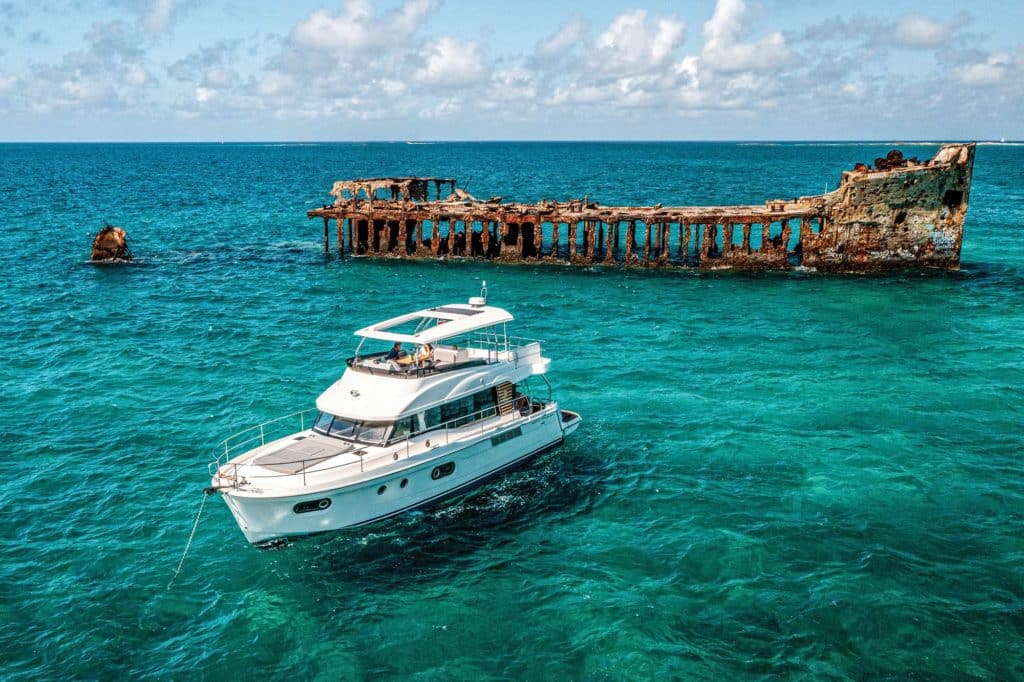
| 48’4” | |
| 14’9” | |
| 510 Gal. | |
| 169 Gal. | |
| 3’10” | |
| : | 27,896 lb. |
Kadey-Krogen 50 Open
Designed for serious extended cruising, Kadey-Krogen Yachts 50 Open provides owners with amenities that will enhance those longer passages. The galley is fitted with a Sub-Zero refrigerator and freezer, a four-burner Wolf range, a microwave and an optional dishwasher. Unlike in many trawlers and their traditional pilothouse design, the galley is located on the same level as the helm and salon. Belowdecks is the master stateroom amidships with two hanging lockers, 12 cabinets, additional drawers for stowage and an en suite head, shower and two sinks. Forward of the master is an office. The 50 Open’s hull has soft chines and a curved after end, much like the characteristics of a sailboat built for cruising. The result is an efficient hull form that provides a gentle landing into troughs when the sea gets a temper. This trawler can cruise at 6 knots for 5,000 nautical miles; 7 knots for 3,000 nautical miles; 8 knots for 2,100 nautical miles; and 9 knots for 1,200 nautical miles.
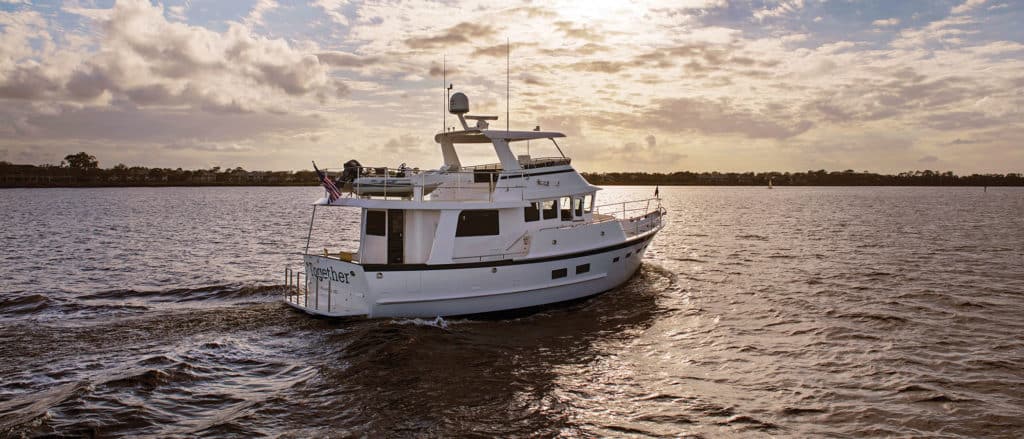
| 52’9” | |
| 17’5” | |
| 1,240 Gal. | |
| 400 Gal. | |
| 5’4” | |
| 68,000 lb. |
Outer Reef 620 Trident
Outer Reef Yachts 620 Trident delivers a three-stateroom layout and optional 600 hp Cummins diesels that allow this vessel to approach a top hop of 21 knots. Cruising speed is a little over 16 knots, burning about 34 gallons of fuel per hour at 2,750 rpm. The amidships master stateroom has 6-foot-8-inch headroom, a walk-in closet and a shower enclosed in smoked glass. In the forepeak VIP stateroom, there are seven drawers, a hanging locker, a 31-inch Samsung TV and 7-foot headroom. The portside guest stateroom can convert to an office, too. The aft galley has a U-shape countertop, a three-burner electric cooktop, a Bosch microwave and a Vitrifrigo refrigerator and freezer. Cherry, walnut and oak are the available wood options.
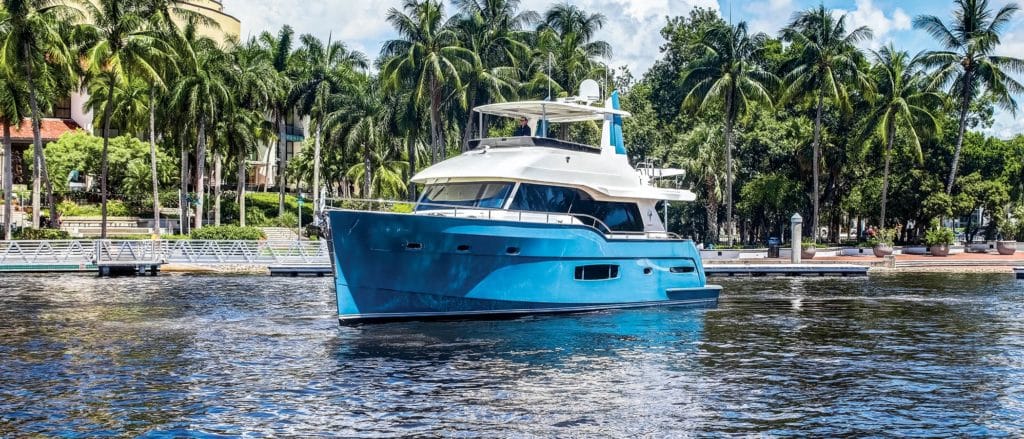
| 61’8” | |
| 16’2” | |
| 800 Gal. | |
| 185 Gal. | |
| : | 4’0” |
| : | 51,000 lb. |
Grand Banks 60 Skylounge
It’s obvious after a quick peek inside the Grand Banks 60 Skylounge that the Grand Banks Yachts trademark external DNA is retained. The deck, cabin house and skylounge are all composed of infused carbon fiber, reducing weight aloft and creating a lower center of gravity. With twin 900 hp Volvo Penta D13 diesels , the 60 Skylounge can accelerate to 31 knots and cruise at about 25 knots. The 60 Skylounge can also travel up to 2,000 nautical miles at 10 knots on a 1,530-gallon fuel tank. Twin 1,000 hp Volvo Penta IPS1200s are also available.
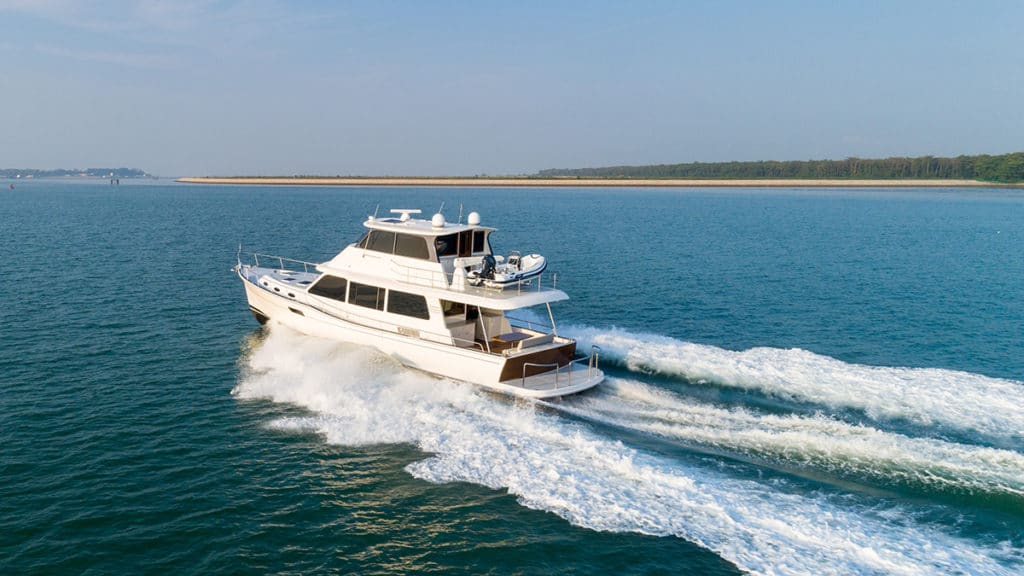
| 66’10” | |
| 19’2” | |
| 1,532 Gal. | |
| 291 Gal. | |
| 4’3” | |
| 62,832 lb. |
Krogen Express 52
The Krogen Express 52 runs on twin 440 hp Yanmar diesels and can cruise at 8 knots for 1,680 nautical miles or at 16 knots for 500 nautical miles. Top hop: 22 knots. In the interior, Krogen Express has outfitted the 52 with a master stateroom and a guest stateroom. The former has a queen island berth, more than 7-foot headroom, hanging lockers and smaller cubbies to port and to starboard, and an en suite head with a molded fiberglass shower stall with a seat, a VacuFlush toilet and a granite countertop. A power lift elevates the berth and grants access to more stowage underneath. The Krogen Express 52’s salon has a 26-inch HD LED TV and a home-theater system, leather Stressless chairs to port and a built-in, L-shape settee to starboard. The galley boasts granite countertops, a three-burner Force 10 propane range with an oven, a refrigerator, a GE microwave oven, a deep Elkay sink and a pullout sprayer faucet. There is a Buff Ultraleather Stidd helm seat for extra comfort during long runs.
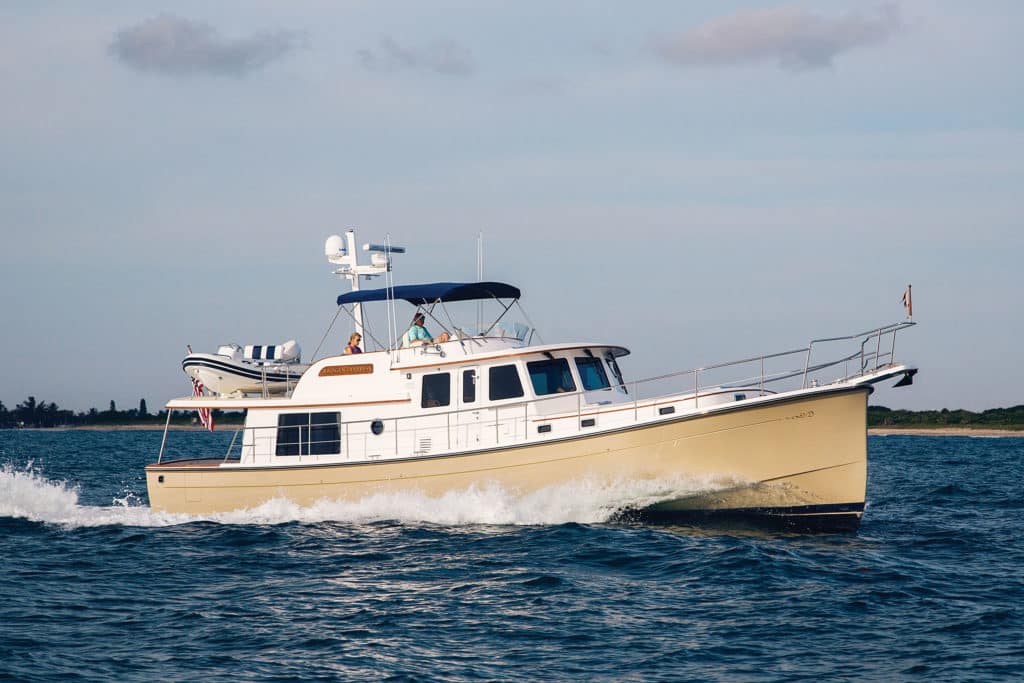
| 57’6” | |
| 15’11” | |
| 700 Gal. | |
| 370 Gal. | |
| 4’0” | |
| 43,000 lb. |
Grand Banks 85 Skylounge
The Grand Banks 85 Skylounge comes in at more than 87 feet length overall and displaces 108,000 pounds, with a 22-plus-foot beam and an air draft of just under 26 feet. Owners can choose either a three- or four-stateroom layout. The standard motors are twin 1,000 hp Volvo Penta IPS diesels, twin 1,300 hp MAN straight-shaft diesels are optional. With the larger engines, owners can also choose an optional stern thruster, in addition to the standard bow thruster. With the IPS diesels, top speed is 26.5 knots and fuel burn is 100 gallons per hour, resulting in a range of 699 nautical miles. At a 21-knot cruise speed, fuel consumption drops to 57 gph, and range climbs to 972 nm. At a 9-knot jog, fuel burn falls to 9 gph, and the Grand Banks 85 Skylounge can cruise nonstop for about 2,500 nautical miles.
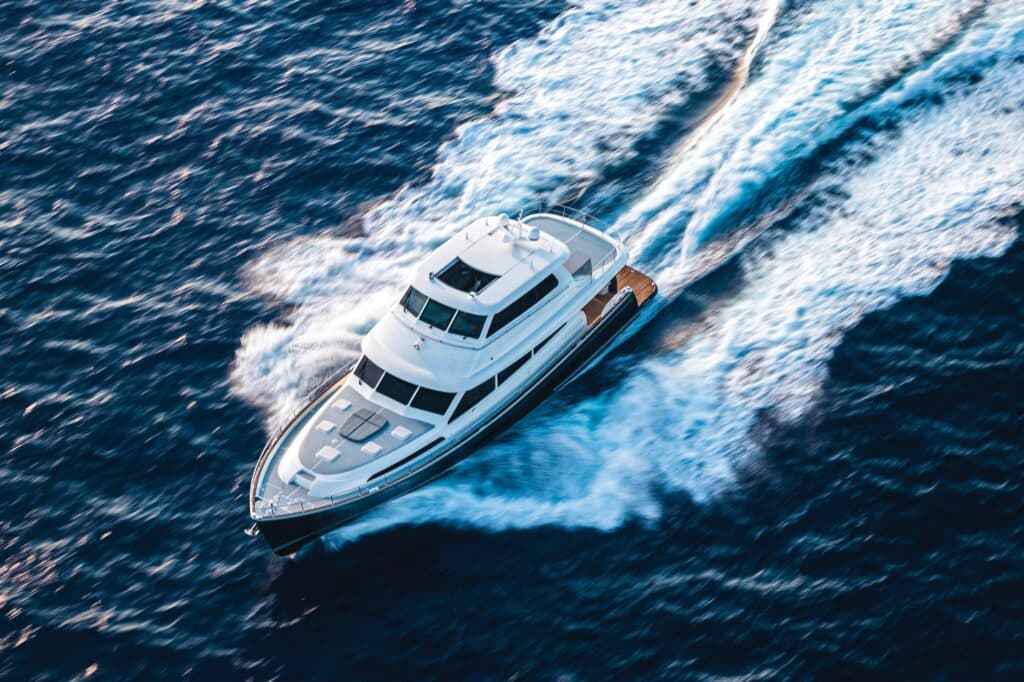
| 87’1” | |
| 22’2” | |
| 2,640 Gal. | |
| 370 Gal. | |
| 4’11” | |
| 108,025 lb. |
Vicem 82 Classic Flybridge
The Vicem 82 Classic is a flybridge model built in cold-molded mahogany, which creates a stout hull form with reduced weight. The yacht is notable for its timeless Downeast lines and strong joiner work. For cruising enthusiasts, the Classic 82 Flybridge is powered with twin 900 hp Volvo Penta D13 diesels . The yacht has a top-end speed of 17.8 knots, and the cruising speed is 15 knots. At 9 knots, and considering a 10-percent fuel reserve, range is reportedly 1,100 nautical miles. Accommodations three en-suite-equipped staterooms. The master stateroom is full-beam and amidships with a king-size berth is on centerline. The starboard-side guest stateroom and a forepeak VIP each have queen-size berths.
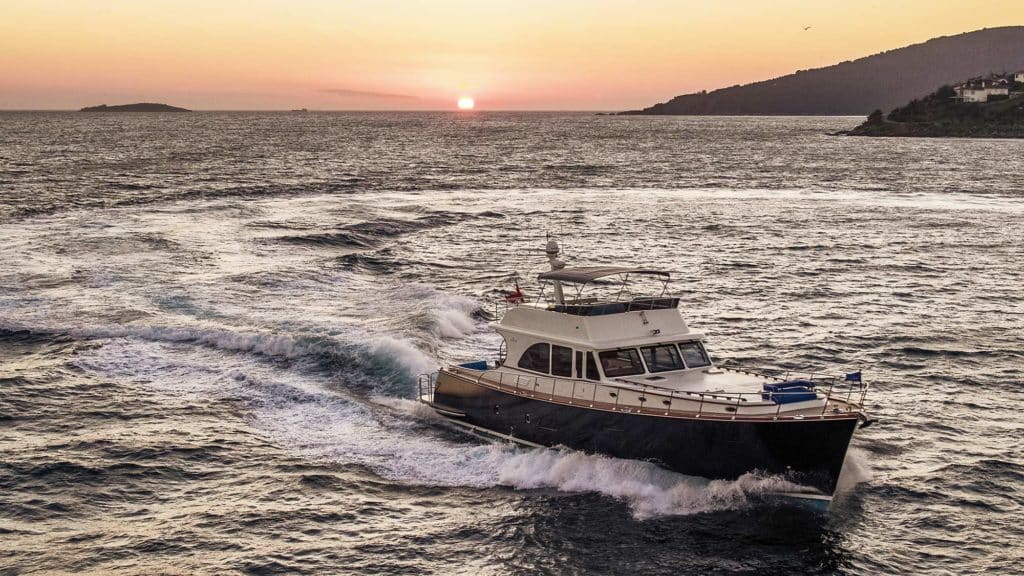
| 81’0” | |
| 20’4” | |
| 1,585 Gal. | |
| 500 Gal. | |
| 5’3” | |
| 10 Knots |
Outer Reef 610 Motoryacht
Built for an enthusiastic cruising couple after a three-year boat search, the Outer Reef Yachts 610 Motoryacht (part of the builder’s Classic series ), was customized with a fore-and-aft berth in the owners’ stateroom (as in, not athwartships), and berths rather than bunks in the smaller of two guest staterooms. This Outer Reef 610 was designed to be used as a liveaboard vessel, so the salon is not set up for dining (there are tables in the pilothouse, on the aft deck and on the bridge). A pair of swivel chairs in the salon face the built-in couch and the pop-up TV to port. The 610 is built with hand-laid fiberglass, PVC coring above the waterline, resin infusion and a vinylester barrier coat against osmosis. Power is twin 500 hp John Deere 6090 diesels turning ZF transmissions . The 610 tops out at about 13.5 knots with full tanks and 21 people aboard. The engines burn 20 gph at 1,800 rpm for 11 knots at 45 percent engine load. Those numbers should allow it to cross oceans without shortening engine life.
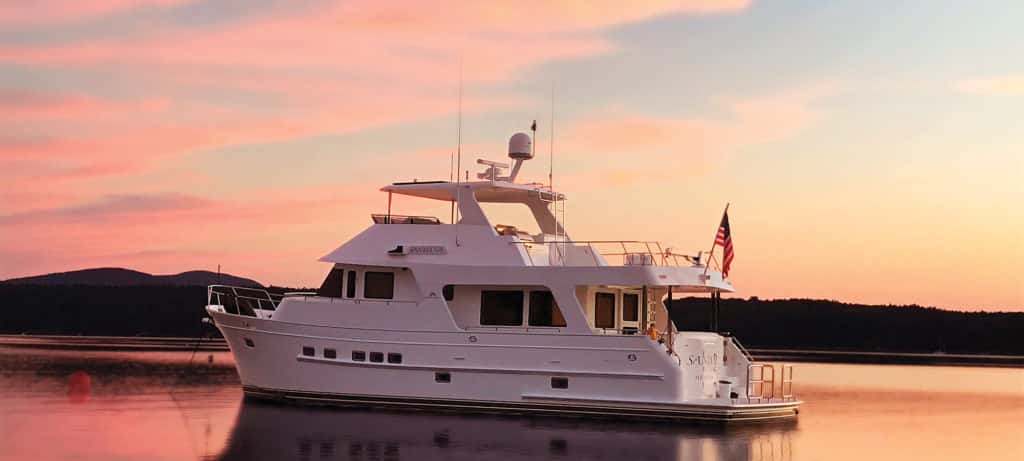
| 61’2” | |
| 17’2” | |
| 1,000 Gal. | |
| 300 Gal. | |
| 5’0” | |
| 93,000 lb. |
Nordhavn 59 Coastal Pilot
Nordhavn has long been known for its stout circumnavigation -capable craft, and the Nordhavn 59 Coastal Pilot carries on the the tradition of a beefy build with addition of…speed. Twenty-knots-plus, actually. Twin 715 hp Cummins diesel inboards and a new semidisplacement hull form are said to be key to the performance equation. The Nordhavn 59CP has a 777-nautical-mile range at a 9.3-knot cruise, and a 255-nm range at its 20.3-knot top-end. Construction is a solid fiberglass hull bottom supported by full-length longitudinal stringers and a series of transversal supports for added backbone. High freeboard should keep the decks dry in a seaway, while rails keep the crew secure during transits. Nordhavn says the 59CP has a “CE category A unlimited offshore rating, ensuring the vessel has the seakeeping and strength capabilities to take on most serious coastal cruises up to 1,000 miles.”
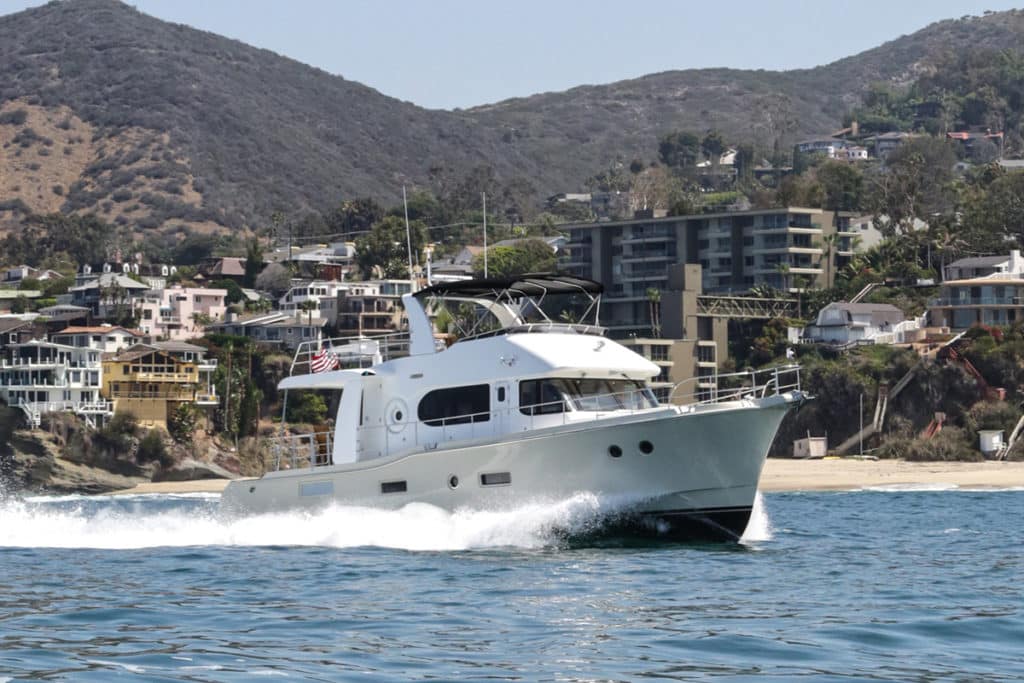
| 58’10” | |
| 17’0” | |
| 1,100 Gal. | |
| 444 Gal. | |
| 5’0” | |
| 88,000 lb. |
Marlow Yachts 58E
Following on the successful Marlow 57 , the Marlow 58E was started from scratch on a blank sheet of paper. The essence of the 58E is that it has better performance and more internal and external volume than her predecessor. The centerline length grew 10 inches over the 57, but the waterline length increased 16 inches and the beam widened 4 inches. If you were to examine the two boats out of the water, you would see more bell-shaped forward sections making for a soft impact with the vee’d portion. Power options start with twin 575 hp Caterpillar C9 diesels, but the 58E we got aboard had beefier twin 1,015 hp Caterpillar C18 diesels. Top speed: 27.9 knots. At 8 knots, the Marlow 58E can cruise nonstop for 1,400 nautical miles.
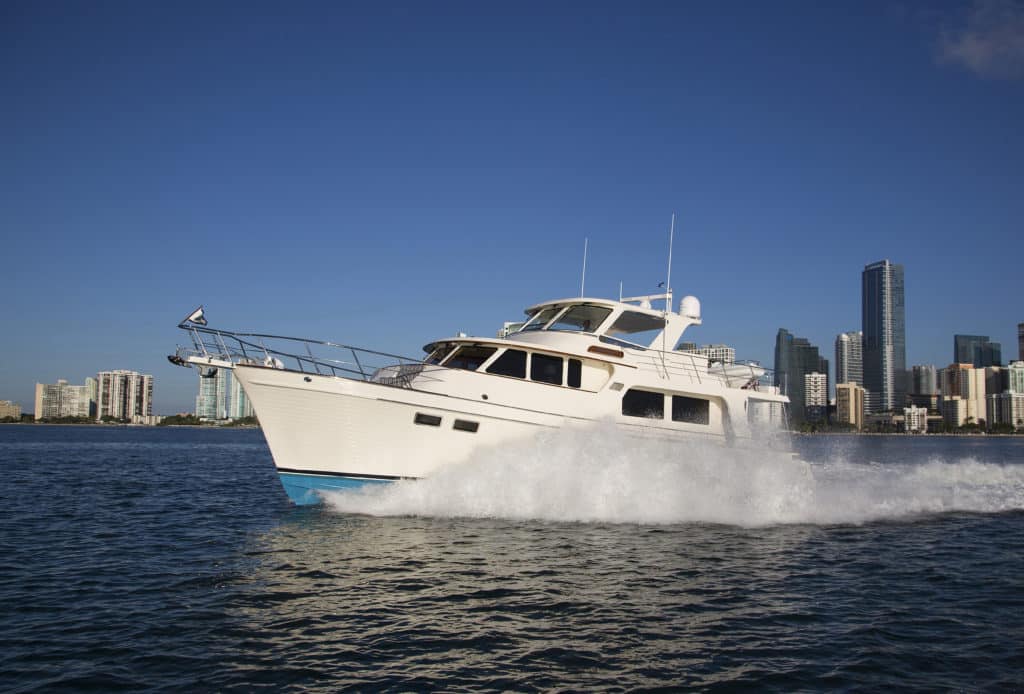
| 67’8” | |
| 18’6” | |
| 1,500 Gal. | |
| 300 Gal. | |
| 4’10” | |
| 69,000 lb. |
Frequently Asked Questions:
What is a trawler yacht?
A true trawler typically has a full-displacement hull form and robust construction to handle open-water operation, and it’s designed to operate self-sufficiently for long periods of time. They are slow-cruising vessels, but over the years, hybrid yachts called fast trawlers have emerged to offer displacement-speed operation as well as the ability to run at planing speeds when desired.
What is a full-displacement hull form?
A displacement-hull form is known is for its rounded nature and deep draft. Full-displacement vessels do not plane on the water, but rather push through the water. This hull design makes displacement-hull vessels incredibly seakindly, but it also makes them relatively slow (think 5, 6, 7, 8 knots) when compared to semidisplacement- and planning-hull designs.
Is a long-range cruiser the same as a trawler?
While all trawlers are certainly long-range cruisers, not all long-range cruisers are trawlers. True trawlers will have full-displacement hull designs and not all long-range cruisers have them.
- More: Beneteau , Bering Yachts , Grand Banks , Kadey-Krogen , Krogen Express , Marlow , Nordhavn , Outer Reef , Ranger Tugs , Trawlers , Vicem , Yachts
- More Yachts
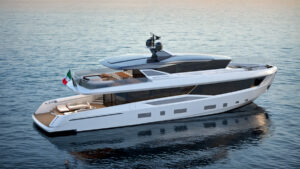
Austin Parker Launches Two New Yacht Series
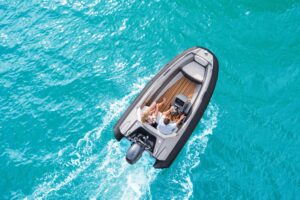
Customize Your Ride: The Argos Nautic GT14 RIB Tender
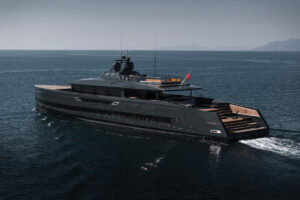
Alia Yachts to Debut SAN Superyacht in Monaco
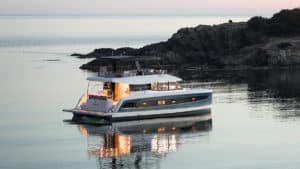
Discover the Top Power Catamarans for 2024
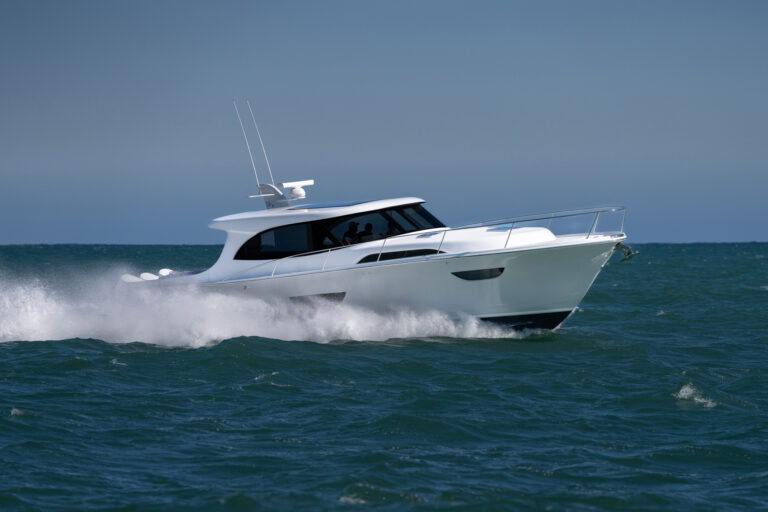
A Standout New Brand
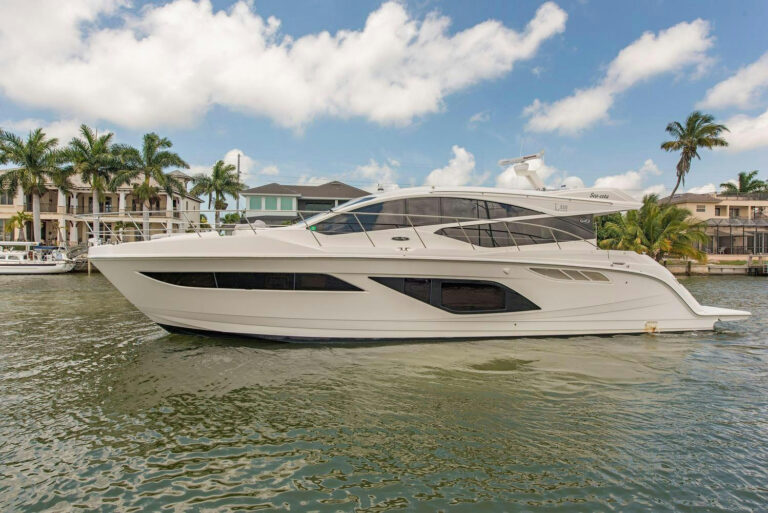
Low-Hour Cruiser: Sea Ray L550 For Sale
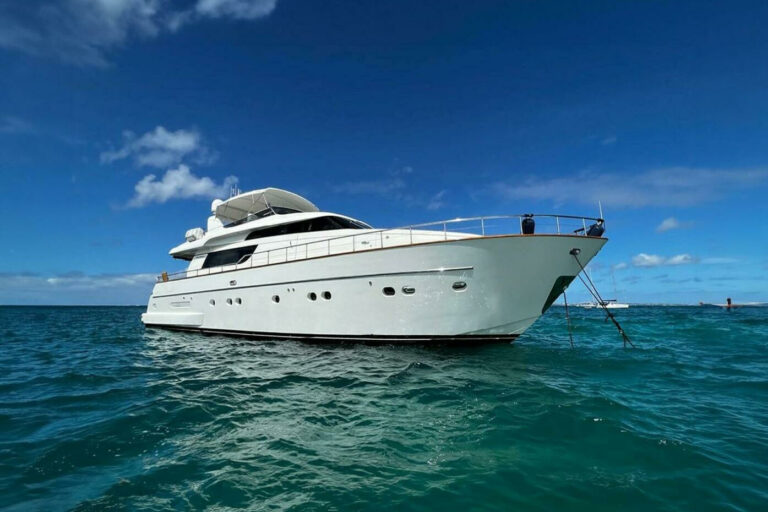
Caribbean Cruiser: Sanlorenzo SL72 For Sale
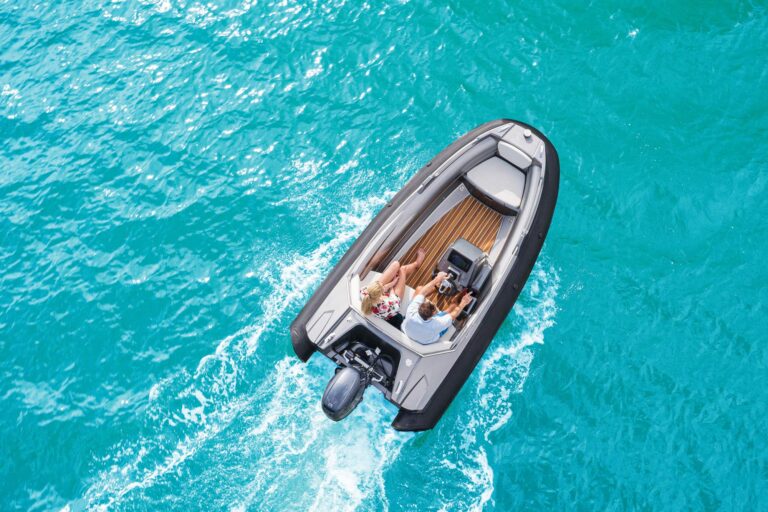
- Digital Edition
- Customer Service
- Privacy Policy
- Terms of Use
- Email Newsletters
- Cruising World
- Sailing World
- Salt Water Sportsman
- Sport Fishing
- Wakeboarding
- Pontoon Boats
- Personal Watercraft
- nauticalknowhow
- Nautical Knots
- Tools and Calculators
Best Trawlers for 2024 – Top 5 Options to Consider
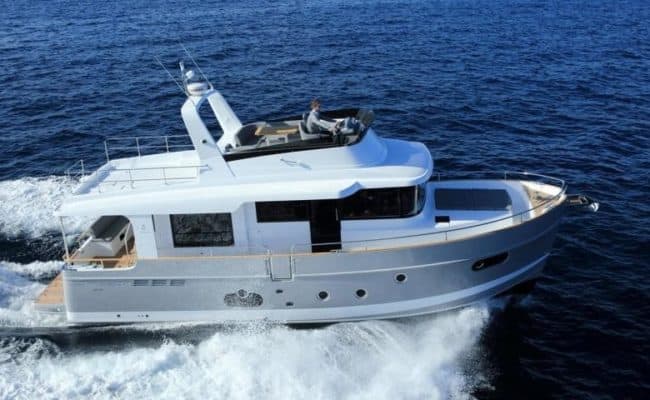
Swift Trawler 50
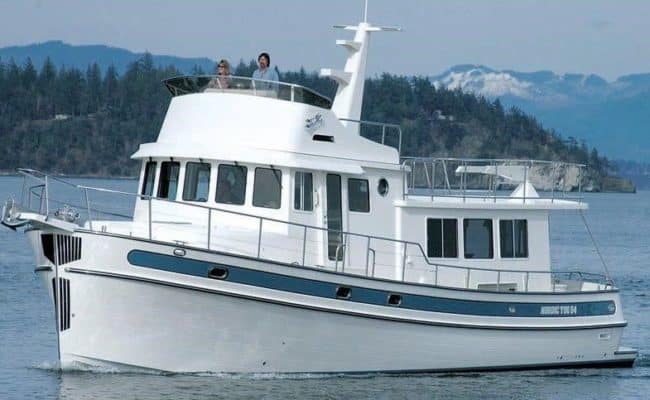
Nordic Tugs 54 Trawler
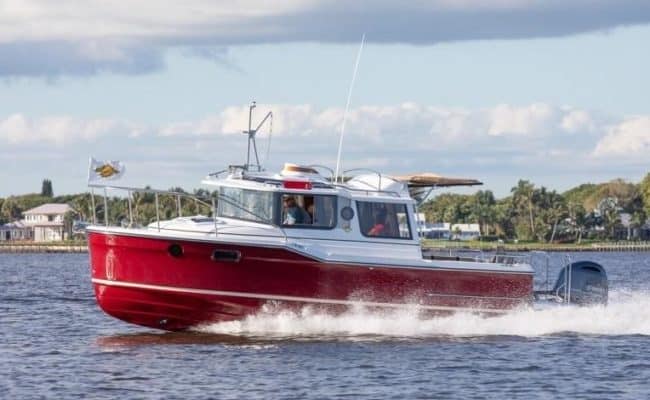
Ranger Tugs R-23
If you love the idea of long-range cruising on the open ocean in a seaworthy vessel that offers the creature comforts you need to live in your watercraft for extended periods, a trawler is precisely what you need in your life.
It’s the closest thing you can get to a yacht without the hefty price tag that comes with it. If you squint hard enough, trawlers look like mini-yachts.
They are stout vessels fitted with powerful engines, a skeg, and a displacement hull designed to plane on the water. Below deck, you’ll find a pilothouse forward, an engine room, a freezer hold, a galley, and accommodations that can host a small crew.
But, perhaps the most important feature of trawlers is that they are designed for fishing . Most come with heavy fishing machinery such as net rollers and trawl winches, which incidentally, is how these vessels get their name. They tow a net through the water to herd and capture fish – a technique known as “trawling.”
So, what are the best trawlers, and how do you choose the best one? We’ve reviewed the top 5 options and put together a comprehensive buyer’s guide to help you pick the best one.
Beneteau is best known for its range of powerboat and sailboat watercraft . Now, if you thought those boats were amazing, you haven’t seen their range of Swift Trawlers.
The Swift Trawler 50 , in particular, is an absolute beauty. It has an expansive interior with lots of natural lighting and exquisite intelligently-designed fittings that make it perfect for both fishing expeditions, as well as romantic or family getaways if you ever need a break from the hustle and bustle of everyday life.
The boat has a spacious deck plan with wide walkways and high bulwarks for added safety onboard. Standard features include a flybridge lounge that comes with a foldable sliding table, an external galley with a sink and worktop, as well as an optional electric grill.
The U-shaped galley comes with two refrigerators, an extractor hood, a double sink, and a service hatch. All in all, the Swift Trawler 50 adds a whole new dimension to luxury cruising.
Buy on Amazon →
● Fully-customizable ● Spacious and luxurious interior ● Comes with lots of convenience amenities
● Slightly pricey
If you love the finer things in life and don’t mind spending a little extra moolah on a boat, you need to check out the Nordic Tugs 54 Trawler. Its meticulous craftsmanship, stunning exterior design, and plush interior finishes make this vessel feel like an ultra-luxurious home on the water.
This American-built trawler has plenty of room inside and comfortably sleeps up to six people. We particularly love its custom wooden fittings that blend luxury and sophistication to give you a true masterpiece.
The beauty of this Nordic tug isn’t skin deep either. This trawler is powered by a 670hp diesel Volvo Penta engine to give you a cruising range of approximately 2,600 NM at 8 knots. So, if you want a vessel that oozes opulence and has loads of comfort and convenience features to boot, the 54 Trawler is precisely what you need.
● Excellent craftsmanship ● Exquisite interior finishes ● Large cruising range
● It’s a bit of a fuel guzzler
Trawlers don’t exactly come cheap. Most of them retail for $500,000+. The Ranger Tugs R-23, however, was designed with the price-conscious boater in mind. At a base price of only $115,000, this trawler boat delivers outstanding value for money.
It is powered by a 200hp Yamaha outboard engine and has a very open and airy feeling about it. The galley is equipped with a microwave, cooktop, and refrigerator with a freezer. This ensures that you have everything you need for those long extended stays out on the water.
It has plenty of storage and is highly versatile – a feature that ensures every space on the boat has multiple uses. For instance, the dinette converts to a sleeper, while the mid-berth can be used as storage or converted to a sleeper for the kids. It also has separate sleeping accommodation for two, or you can add the filler cushion to combine them.
What sets the R-23 apart from other trawlers in its class is the fact that it has many of the same amenities you would expect in a larger cruising yacht. You’ll be hard-pressed to find a similar vessel at that price point.
● Great value for money ● Packed with loads of convenience amenities ● Suitable for long-range cruising
● The engine is slightly noisy
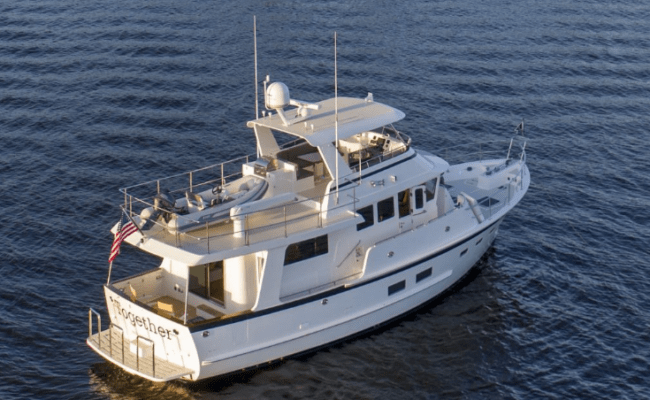
If you’re up for a cruising adventure on the open ocean, then you’ll love what the Kadey-Krogen range of trawlers brings to the table. The boat manufacturer has been around for more than four decades and has maintained its classic patented full-displacement hull design, making these trawlers one of the most stable vessels you’ll come across.
This makes them perfect for ocean cruising, even in rough waters and sloppy weather conditions. It has ample room to store all the fuel and supplies required for long passages across the ocean.
The Krogen 50 , in particular, is a work of art. Its beauty takes your breath away the moment you lay your eyes on it. The interior has a rich, cozy home-like feel that makes you forget you’re on the water. Every aspect of this trawler is designed meticulously to combine high-performance capabilities with livability.
● Built for long ocean cruises ● Provides exceptional stability even in the rough waters of the high seas ● Beautiful interior design
● Slower than other trawlers in its class
Nordhavn 41
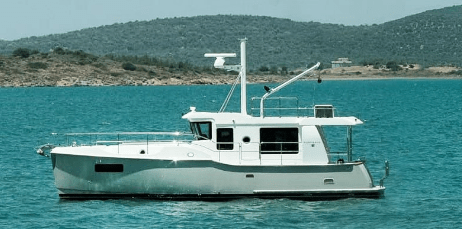
No list of top trawlers would be deemed complete if it didn’t feature Nordhavn. The boat manufacturer has been around for several decades and is renowned for its well-engineered crafts built to last a lifetime.
Now, if you’re in the market for a liveaboard trawler that you can use to cross oceans on your cruise around the world, the Nordhavn 41 is designed to do just that. The folks there weren’t playing around when they built this boat.
They employed the world’s most advanced Computational Fluid Dynamics alongside the latest design technology to produce the safest and most efficient watercraft you’ll ever come across. It has ample liveaboard space, with an expansive galley that comes with loads of amenities like a stovetop, refrigerator, cabinetry, and a countertop.
It also has an exquisite master cabin and a guest stateroom that sleeps two. All in all, if you plan to live onboard your trawler, this is the boat you want to do it in.
● Roomy interior ● Has several convenience features ● Built to last a lifetime
● Fuel efficiency not as you would expect
How to Choose the Best Trawlers – Mistakes to Avoid
There’s an old saying that trawler owners have some of the most impressive cruising résumés in the boating world. That experience has come, in large part, from trial and error.
And, make no mistake about it – the opportunity to make a big blunder is always lurking around the corner. In this buyer’s guide, we explore some of the mistakes to avoid when you go trawler shopping, as well as some useful tips that will come in handy when looking for the best trawlers.
1. Setting Unrealistic Expectations
This is the easiest of mistakes to make, especially if you’re a first-time buyer. But, as long as you do your homework and research on the boat you want to buy, it’s easy to minimize the chances of making this classic rookie mistake.
The first step involves a serious introspection about what you want to use the boat for – for the first five years, at least. Five years is the sweet spot.
Do you plan to use it for some heavy-duty fishing, or do you intend to use it more for recreational purposes like cruising the open ocean waters with your family? Once that’s clear in your mind, then and only then can you start the search for your perfect boat.
There are three main things you need to think about when looking for the best trawlers to buy.
Hull Design
First is the hull design. This is important since it will affect the way your boat handles in rough waters. Ideally, you want a boat with a full-displacement hull that’s ballasted.
It should be able to give you the range you need to make long ocean passages and economic enough to get you to your destination and back without having to spend a small fortune in the process.
If, on the other hand, you want to get to your destination faster and don’t plan on venturing into exceptionally choppy waters, a trawler with a semi-displacement hull will suffice since it runs faster compared to its full-displacement counterparts.
The next thing you need to consider is the overall safety of the trawler you want to get. Some of the features you should be looking out for include its ability to navigate extreme weather conditions , remain stable in the rough open seas, and carry heavy equipment on board. The vessel you buy should also be unsinkable.
Finally, you should think about the comfort and convenience features that come with the boat. You are, after all, going to be out at sea for long periods.
Now, if the purpose of the boat you’re getting is exclusively for fishing, then you can get away with buying a basic boat with Spartan accommodations. Such a boat would be more focused on the fishing features built into the boat’s design and less on luxury.
On the other hand, if you intend to use it for recreational purposes, the majority of the time, get a boat whose interior setup makes it ideal for the whole family. It should have plenty of comfort and convenience amenities that make it feel like a home away from home.
Once you know the type of trawler you want to get based on what you plan to use it for, you can now start narrowing down the specific models that embody your vision for the perfect boat. Sea trials should soon follow to give you a feel of the trawler’s handling characteristics.
We cannot emphasize enough how important this step is. This is why you should take the sea trial bit very seriously. So, while the boat is still at the dealer’s dock, schedule a long sea trial, preferably in iffy weather, to put the trawler through her paces.
If you’re happy with the results, you can now address your expectations of the boat one at a time. Keep in mind that you may need to compromise on certain aspects of it. Nonetheless, based on how much customization the manufacturer allows for, you may be able to get a good number of the features you might want it to have.
2. Underestimating the True Cost of Owning a Trawler
This is yet another common mistake most first-time boat buyers make. You may become so fixated on buying a trawler that you end up overlooking the operational costs that come with owning one.
Now, owning a boat is nothing like owning a car. While both pieces of machinery need regular maintenance and occasional repairs to keep them in good running form, the costs associated with each are worlds apart.
A seemingly simple task like cleaning your trawler is nowhere near the price of taking your car to the drive-through carwash to get it spick and span. The process may involve getting experienced scuba divers to clean the underside of the trawler for you. That aside, other costs you have to factor in include:
- Boat insurance
- Fuel and oil changes
- Monthly slip fees at the marina
- Servicing and repair
- Spare parts
- Waxing it every 6 months
- … and several other expenses
Once you add all these up and break the figure into a monthly rate, you’ll be able to get what the true cost of ownership is. Buy a boat that’s within your budget while factoring-in what it will cost to run it.
3. Buying the Wrong Type of Boat
Again, this all comes down to your intended use of the vessel. If you’re looking to buy a liveaboard trawler, you might want to get something with a little more room. Boats can start to feel a little claustrophobic after a while. So, if that’s going to be you and your family’s full time living space, you might want to consider how much livable space the boat in question comes with.
The other thing you need to think about is the overall speed of the boat. A trawler with a full-displacement hull may offer the stability it needs to combat the high seas’ rough waters, but the tradeoff here will be speed. Boats with this type of hull move painfully slow through the water.
Think – A snail riding on a turtle’s back going, “Weeee…” as the wind blows across the snail’s head. In this case, you would be the snail, and the full-displacement-hull trawler would be the turtle. You may even experience the occasional sailboat zooming past you as you trudge along the water.
So, if speed matters a great deal to you, you’ll need to buy the right type of trawler. Perhaps one with a semi-displacement hull instead?
4. Not Involving Your Partner in the Purchase Process
The secret to the successful purchase of a trawler is a lot like relationships themselves: compromise.
To avoid putting your trawler up for sale less than a year after purchasing it, ensure your partner is involved in the decision-making process. You need to find a boat that you’re both happy with; otherwise, that’s just a disaster waiting to happen.
Since you’re both going to be spending considerable amounts of time out at sea, it’s important that boating is an equal passion for both partners. The boat in question needs to have the features and amenities you both want in a great trawler.
Granted, you may not get a vessel that addresses all the individual needs of each party, but it’s about compromise once again. Find a middle ground that makes you both happy.
5. Impulse Buying
Trawling is a lifestyle, not a hobby. If it’s a day cruising boat you’re after, this isn’t it. Trawlers are designed for people who intend to spend most of their time on the water, fishing in the high seas.
So, if you recently attended a boat show and fell in love with that swanky-looking trawler you came across, you might want to pause before you go ahead and purchase it. As a rule of thumb, never sign a contract when you’re at a boat show – tempting as it may be.
Don’t get sucked-in by the artificial pricing of boats, only to end up entangled in a long-term financial commitment simply because you made an impulse decision in the heat of the moment. Understand what trawlers are intended for and take the time to figure out if that’s the lifestyle you envision for yourself for the next five years.
If it is, avoid making the mistakes outlined in the previous sections when choosing the best trawler to buy.
The Ultimate Adventure-Filled Lifestyle
If you’re passionate about the trawling, we recommend getting any of the 5 boats we’ve reviewed in this guide. Ensure that you avoid making the common mistakes made by first-time boat buyers when shopping for the best trawlers.
One thing is for sure, though. You’re about to embark on the most thrilling adventure of your entire life.
In the meantime, if a yacht is more your speed, we’ve reviewed the best yachts . They’re worth checking out.
About Chris
Outdoors, I’m in my element, especially in the water. I know the importance of being geared up for anything. I do the deep digital dive, researching gear, boats and knowhow and love keeping my readership at the helm of their passions.
Categories : Boats
michael mann on August 5, 2021
i really enjoyed your article. the 5 boats you have listed are very ocean capable. i do have a question. how about BERING yachts. i believe their full-displacement and are also ocean crossing capable? can you tell me anything about BERING yachts? and why they didn’t make your list?
Leave a Reply Cancel reply
Your email address will not be published. Required fields are marked *
Save my name, email, and website in this browser for the next time I comment.
More in Boats

What Is A Gunwale?

131 of the Best Hawaiian Boat Names

167 Patriotic Boat Names

The 138 Best Boat Names for Dog Lovers

The People’s Poncho Review and Ratings

Oru Lake Kayak Review

About Boatsafe
Established in 1998, BoatSafe is your independent guide into the world of boating, fishing, and watersports. We provide expert insights and detailed guides to help you find products tailored to your needs and budget.
Contact Boatsafe
- Address: 4021 West Walnut Street. Rogers, AR 72756
- Phone: (479)339-4795
- Email: [email protected]
Site Navigation
- How We Test
- Corrections Policy
- Privacy Policy
- Terms & Conditions
- Editorial Policy
- Affiliate Disclosure
Our Reviews

All content is © Copyright 2024. All rights reserved.

NORDIC TUGS
NORTHERN MARINE
BULLFROG BOATS
MY YACHT WORTH?
- USED YACHTS
FEATURED LISTINGS
YACHTS BY BUILDER
YACHTS BY LOCATION
YACHTS BY TYPE
WHY LIST WITH US
- BUYING A TRAWLER YACHT
- TRAWLER BOAT BUYER'S GUIDE
FT LAUDERDALE
MARINA DEL REY
SAN FRANCISCO BAY
VICTORIA B.C.
- SERVICE - PNW
FLOTILLA EVENTS
SEATTLE SAILING ACADEMY
- JOIN OUR TEAM
The Ultimate Trawler Boat Buying Guide

I have been writing about trawlers and powerboat cruising for many years. It is both an obsession and a fascination for me, as I witness hundreds of people, mostly couples, embrace the trawler lifestyle as a healthy alternative to routine living on land. While the last several years certainly got a lot of people and families to escape from a confined existence, choosing a freer life on the water away from so many imposed restrictions, the trawler lifestyle was already alive and well in North America.
(Below: "Growler", a Custom Zimmerman 36 Trawler once owned by Bill Parlatore, founder of Passagemaker Magazine.)

What is the appeal of this lifestyle? For me, living aboard and operating trawler yachts represents a quality of life that embraces the values of self-sufficiency and independence, and adventure without sacrificing comfort. One is free to move as the mood dictates, finding a balance of nature while engaging as much—or as little—in society, careers, and other activities that compensate with convenience, glittery things, nice cars and houses, and other material things. Many come to realize at some point they are but distractions from a more grounded existence.
Operating a trawler does not demand the skills and experience required from a similar size sailboat . And it is relatively easy to learn the nuances of engine and vessel maintenance, navigation, and proper seamanship. Depending on what kind of powerboat one chooses, they can be economical to own and operate, and offer a pleasant home experience that often rivals luxury living ashore. And a point often missed when discussing this lifestyle, the skills needed to competently run a trawler offer stimulating physical and mental challenges that are immensely valuable at the stage of life when most of us pursue this life direction.
It is rewarding to gain confidence and a sense of accomplishment with every new port, every new challenge. Dealing with the vagaries of life on the water makes one stronger, more resilient, and better able to deal with just about anything life throws at us. A t-shirt captured that sentiment: “Calm seas never made a skilled sailor.”
And a final note before I begin. While we’ll look at the cost of admission into this life, most of us are at a point in life where we have more financial worth than time, so the cost of getting into this lifestyle is more than made up by a quality of life that most agree is hard to beat.
This guide to buying a trawler yacht serves several functions, and I hope to satisfy them in the following pages. We will discuss the choices one has in the trawler market, and hopefully explain the value of each type as it relates to selecting the right boat. At the same time, I hope to underscore this discussion with a greater appreciation for what I believe is often missed. Choosing the right boat is only the beginning. There is much more to the selection process than simply choosing a layout that seems comfortable or a boat that comes with all the bells and whistles. Walking through a boat during a boat show is only the first taste of what a boat has to offer. I trust my guide will help people avoid falling in love with the wrong boat. If I am successful, we will keep such misplaced passion to a minimum.
TRAWLER BUYER'S GUIDE - TABLE OF CONTENTS
- What Is A Trawler?
- What Are The Different Types Of Trawler Boats?
- What's The Difference Between Trawlers & Cruising Boats?
- What About Catamarans?
- Hybrid & EV Powerboats
- How Many People To Take On Your Trawler?
- Where Should You Take Your Trawler?
- How Long Should You Cruise On Your Trawler?
- What Does A Trawler Boat Cost?
- Completing The Process Of Buying A Trawler
I. What is a Trawler Anyway?
I looked back at some of the references and definitions I offered over the years, as well as those presented by our editors. I keep coming back to the one that still resonates best with me, even as I look over the current field of trawlers and cruising yachts out there. Some are very similar to what was sold years ago, but not all, and each supports a lifestyle that is capable, comfortable, and relatively easy.
I am confident that, as we get ready to start 2024, the word “trawler” is best considered a metaphor for the cruising lifestyle it so well represents. Yacht brokers may disagree with me, but I stand firm. Back in the 1960s, power cruising pioneer Robert Beebe suggested that boats aren’t good for “voyaging” under power if they do not strongly resemble “true” trawlers. He referred, of course, to those husky fishing vessels that remain at sea for long periods, surviving anything the weather and sea throws at them, and safely bringing the catch and crew home when the job is done.
Today that analogy is not even remotely fitting for many powerboats that can capably make passages at sea, complete extended coastal and inland cruises, and serve as comfortable and safe homes for their owners. There has been a continuous evolution of the cruising powerboat genre for years now, and they now come in an assortment of styles, hull shapes, and sizes. And there is no better time than now to look at the field of available trawler choices.
In addition to traditional yacht designs that continue to be refined, we now also have new choices that really push the envelope beyond traditional shapes and concepts. And the introduction of powerful and reliable outboard propulsion has brought along a new category of cruising boats that simply did not exist before.
It is all very exciting. I once observed that comparing the cruising characteristics of a full displacement steel trawler to a displacement power catamaran or a larger Downeast cruiser is pure folly. Each can make a superb cruising boat for owners. Which is the better athlete: a football player, a hockey goalie, or a ballet dancer?
Once you understand the many kinds of boats on the market today, and the choices you have, given your budget and other considerations, it is important to match whatever boat you choose to your style of cruising. This is at the heart of this buyer’s guide. Yes, it is vital to know what is out there to choose from, but it is even more critical to understand your needs and what kind of boat will best fit those needs. While this may be a challenge for some, hasty mistakes can lead to broken plans, create unnecessary anxiety, and put an unfortunate end to one’s dream cruising plans. All of which is totally avoidable.
Let’s begin with a practical look at the main types of hull shapes to understand the positive and negative aspects of each as they relate to cruising. Then we’ll look into how they may fit your needs.
(Below: Trawler owners meet up during the Pacific Northwest Nordic Tug Owners Rendezvous. Also called PANNTOA .)

II. Choices Come in All Shapes
Full Displacement
What was once the only real choice for those intending to cruise under power is the full displacement hull shape. It is the earliest form of powerboat and most commercial and fishing vessels are of this type. It is the most seaworthy and efficient hull shape. Many popular cruising boats are full displacement, such as:
- Northern Marine
- Hatteras LRC
- And dozens of custom steel and fiberglass trawlers.
These vessels travel efficiently through the water, with no unnecessary energy spent trying to lift the hull up onto the wave in front. They are well matched to lower horsepower engines, as they offer minimal resistance going through the water.
These boats are very forgiving at sea, which makes them very seaworthy. Rather than resist wave action, they give way, and roll to let the wave energy pass by rather than resist it, which keeps them safe at sea.
The full hull shape has the most volume for a given length, which translates into superior inside dimensions for accommodations, large tankage, and exceptional storage. They make fantastic liveaboard boats and for long distance cruising these small ships can carry all your stuff. Onboard weight is not an issue compared to any other type of hull shape.
(Below: A Northern Marine 57 is a good example of a full-displacement trawler yacht.)

Again, the low energy requirements to travel through the water, rather than try to get on top of it, means they are best powered by relatively small diesel engines to run at the displacement speeds within the maximum hull speed of 1.34 times the square root of the waterline length. This is Froude’s Law and is the limit of their speed potential. Combine this lower horsepower engine with huge fuel tankage and owners have the range to travel long distance. In some of these full displacement trawlers, one can make across-and-back ocean crossings, or enjoy a full year of cruising, without stopping to buy fuel.
For efficient and economical cruising, a full displacement trawler is the way to go, for many reasons. Rather than bother with the generally tedious sailboat mentality of electrical and battery load management, owners of full displacement trawlers just don’t worry about it. The boat is fitted with one, two, or even three generators that supply all the electrical power needed to run even a full suite of domestic galley appliances, HVAC, and pilothouse electronics.
Not only do these gensets make for relatively unlimited self-sufficiency whenever the trawlers remain at anchor, but the better builders take advantage of the hull volume to thoughtfully plan accommodations during construction. Generators are then strategically located to minimize noise and vibration throughout the boat. Just like being on a small ship, one is vaguely aware that a generator is running somewhere. The boat is designed and built around that concept, so there is always plenty of quiet, available electrical power. Whatever sense that one has of distant humming from running machinery, it is nothing more than evidence of shipboard activity. I have always loved the sense of independence and freedom it provides. On the right boat, it is so muted that it does not detract from the feeling of being one with nature, as when alone in a quiet anchorage tucked inside a rugged Alaskan island coastline.
Some high-end expedition trawlers go one step further. Northern Marine, for example, often designs the boat around a pair of identical 20kW generators to share generating duty. There might also be a small third unit for nighttime use when loads are much reduced. And much like the commercial and working vessels that are the heritage behind the company, nothing is hidden or tucked away. Serious business demands serious access.
(Below: The Northern Marine 57 has two 20kW generators for long-distance adventures.)

There is always a downside, of course. Full displacement boats are limited in speed, and cruising at 7-10 knots is about all one can expect no matter how much horsepower one theoretically adds. It is simply a full shape traveling in its sweet spot in the water. But in conditions where lesser yachts need to slow down to handle the rough seas, these boats just continue on at their normal cruising speed, no big deal and perfectly safe.
The other issue is that such seaworthiness comes at the expense of rolling in a seaway. Yes, it is why these boats are so safe. But it can be uncomfortable for crew, and over time can wear down even the hardiest crew.
That is why most full displacement boats have some form of stabilization. They lack sails to remain steady. These trawlers instead rely on some form of stabilizing technology, either active or passive, and they are quite effective reducing rolling at sea. Active fin stabilizers, flopperstoppers, gyrostabilizers, even flume tanks, have been used with varying degrees of success to manage the roll of a full displacement yacht. And active systems keep getting better, with more sensitive electronic controls and sensors to reduce movement. The current generation of gyro systems, such as the SeaKeeper, are proving popular in the trawler community and for good reason.
Full displacement boats are not the best for close quarter maneuvering, especially as many have a single diesel engine. Learning to drive a big displacement trawler is a worthy skill to develop as it builds confidence. One must understand the ship’s main rudder is designed and sized for optimum performance at sea, not close quarter maneuvering. That is why these boats have bow and stern thrusters. Just like every commercial ship out there. The right tools for the job.
Another potential downside of this hull shape has to do with where one cruises. These boats typically have deeper draft and so would not be ideal for shallow water cruising as one is finds in the Florida Keys, the ICW, and the Bahamas and Caribbean.
Having gone many thousands of miles on full displacement trawlers, I have great respect and appreciation of the beauty of this hull shape. Once out of sight of land, speed becomes the speed du jour, no big deal without reference on land. And a stabilized full displacement trawler is a great ride at sea, easy running and comfortable. Even in heavy weather there is generally little cause for concern…if at all.
One more comment on the speed of travel. I always found the underway travel and motion quickly settles crew into a normal routine, with everyone going about their day as if they were in a marina or back on land. Laundry gets done, writing takes place, leisurely cooking in the galley, maybe a brisket in the crockpot. There is always the need for some maintenance, catching up with cruising guides, email with family and friends, and other activities. This is in sharp contrast to traveling at speed, where the motion forces one to hold on, firmly seated at the saloon table, or wedged into a corner cushion. Baking cookies was a favorite memory and one the rest of that crew surely remembers. The boat smelled fantastic, even if I could barely keep up with the disappearing cookies off the cooling rack.
For many reasons, life on a small ship has much to recommend it.
Semi-Displacement
The other hull shape that defines the trawler style cruising boat is the semi-displacement hull. It is perfect for those who don’t need the fuel and storage capabilities of the full displacement trawler, and do not intend to spend a great deal of time making passages, cruising remote areas, or going all season without buying fuel. The semi-displacement trawler is a fabulous compromise. Designers have come up with ways to get more performance, reduce draft, and still serve as a comfortable home while traveling or living aboard.
One way to improve performance is to lose weight in the form of fuel and water tankage, reducing both the size and number of tanks in the boat. They may also cut back on some of the backup redundant equipment and tighten up accommodations. Going on a diet is definitely a path to higher performance. While those granite counters and flooring seem right at home in a full displacement trawler yacht, substituting lighter weight materials will result in a higher speed potential in a semi-displacement yacht. With less weight there is less boat in the water, less draft, wetted surface, and resistance, especially without a deep keel.
Changes to the hull shape come from modifying the typically rounded stern into a flatter hull form aft with hard chines. The flatter hull form will reach higher speeds when adding more horsepower to drive the boat up onto the leading wave. And the flatter stern adds stability, taking out some of the inherent roll associated with a full displacement trawler.
While these boats are quite happy to run along at displacement speeds, the semi-displacement cruiser can also really get up and go, if there is enough horsepower. With bigger engines pushing the boat, it can break free of the water, traveling at 12-15 knots or higher, depending on how much horsepower is in the boat.
This is by far the most popular trawler hull shape primarily for this reason. It can be powered by a variety of engines, still has good load carrying and accommodations, has reduced draft, and provides many—if not all—of the benefits of the full displacement trawler yacht.
Most trawlers in our cruising community are of the semi-displacement type, and brands like:
- Grand Banks
- Nordic Tugs
- Ocean Alexander
- American Tug
- And dozens more prove it is a wonderful all-around platform for cruising
(Interestingly, almost all the trawlers built in Asia during the 1970s and ‘80s were semi-displacement trawlers. But they were powered by low horsepower diesels, often the venerable Lehman Ford 120hp and 135hp engines, so they were priced to sell and provide the economical trawler experience to a wide range of buyers. The fact that these boats could only run at displacement speeds gave many the impression that they were full displacement trawlers, a confusion that continues to exist today.)
(Below: The Nordic Tug 40 is a good example of a semi-displacement trawler.)

The top speed of a semi-displacement trawler is limited by how much horsepower the builder reasons is sellable in the new boats. In my opinion, it was downright shameful when the management of the high-quality Grand Banks brand, the hands down bullseye of the trawler market for many years, decided at one point that all its models had to be capable of cruising speeds above 18 knots. The phenomenally successful and classic beauty of the original GB hull did not lend itself to a pair of high horsepower engines. It was painful to watch the amount of water pushed by a Grand Banks making 22 knots, made worse by the fuel burn to achieve that performance.
To some extent, larger semi-displacement trawlers also take advantage of generators to supply onboard electrical power, as there is not enough room for dozens of dedicated house batteries for the boat’s electrical needs. In most cases a running generator is not as quiet or unobtrusive as one comes to expect on a full displacement trawler, but a modern installation with underwater exhaust does much to reduce the impact of a running generator.
The benefits of the semi-displacement trawler clearly explain why it remains the most popular choice for most people. It has reasonable storage and fuel capacity, comfortable accommodations, and can run at higher speeds. All things considered, for most people it is the best package of features one looks for.
But it is not perfect. One of the disadvantages of the hull form is its less-than-ideal handling in rough seas. Some of these boats have small rudders to allow better control at higher speeds. The boat’s motion tends to lose its normal composure in rough water, when the boat must slow down, and the rudders are less effective.
(On modern boats, this is somewhat negated by stabilizers and gyrostabilizer systems. They do a remarkable job of reducing the rolling motion in these boats, and owners are more than satisfied to have motion under control on their semi-displacement trawlers.)
Owners of semi-displacement boats really appreciate being able to run faster to their next destination. The difference between eight knots and 11 knots is readily apparent when one can see the destination ahead and the crew is anxious to get there.
One of the tradeoffs of the semi-displacement trawler is that when they achieve high speed, they burn obscene amounts of fuel, and quickly. To own a large, semi-displacement trawler capable of 20+ knots is an exercise in balancing economy with distance and time. Those who don’t have the time will spend more at the fuel dock. It is just that simple.
Everything considered, the semi-displacement trawler is justifiably very popular for most cruising, even when that includes long distance travel. Flexibility is its best feature.
Big and small, fast or slow, the full displacement and semi-displacement hull shapes are what we talk about when we talk about trawlers and the trawler lifestyle. Motoryachts most often fit into the semi-displacement category, and one will find them cruising along with the trawler crowd. But the motoryacht is much better staying at a luxury marina will full shorepower and other hookups. One rarely finds motoryachts anchored out for days on end, where trawlers often spend their time. It isn’t what motoryachts are designed to do.
For many years, the cruising scene consisted of sailboats and trawlers, and that was it. Visit any popular cruising destination, from Marsh Harbour to Roche Harbor, and the anchorage and marinas were full of sailboats and trawlers. Both excel at life on the hook, and the constant scurrying of crew, dogs, provisions, and gear by speedy dinghies are as much a part of the cruising life as sundowners on the beach watching for the Green Flash.
III. Not All Cruising Powerboats Today Are Trawlers
There are two other kinds of powerboats that we find cruising in North America today. And they have really grown in popularity in recent years.
One has taken the world by storm, in my opinion. Almost every sailing couple I know who came to the Dark Side has gone in this direction, but they are certainly not the only ones who choose these boats. For many people, the lure of being on the water, even if it is only for weekends, must be satisfied in short order. People with limited time have a need for speed that full-time cruisers do not. These people want efficient, high-speed running, and it is more desirable than load-carrying ability or accommodations. Without a planing hull, they can’t go.
The planing hull quickly moves from hull speed up on top of the water. A burst of horsepower drives the boat up, and it doesn’t take as much power to stay there. It is an efficient speed machine. Some boats in our niche can really blast along in calm water, cruising efficiently at 25 knots…or higher. Some examples are:
- Nimbus Boats
A planing hull has a shallow draft, with a sharp entry and a flat, minimal underbody. This allows a planing boat to reach its destination quickly and then slow down if owners choose to gunkhole in skinny water. But watch that running gear, as there is nothing to protect the props and rudders designed for minimal drag.
This boat is best suited for those in a hurry. But they are still cruising boats, and they open up possibilities for those with only so much available time. The Great Loop becomes possible for those who can’t spare a year or more. Boaters headed to Florida for the winter and don’t have months to do the ICW. Puget Sound owners with weeks instead of months to explore the Inside Passage, or East Coast boaters who want to experience the Abacos but don’t have all winter to do so.
Get there quickly, then slow down and smell the flowers. Sounds like a plan to me.
(Below: Sidonia & Fred kept their 62-foot trawler, but purchased this Nimbus 405 to complete the Great Loop. Read their story .)

One potential disadvantage of the planing boat is that high-speed efficiency is directly tied to weight. Given that many of these boats are built with the latest infused fiberglass construction, often using high-tech cored material, the goal is to save weight where possible. Keeping weight down is important. And limited bilge and accommodations spaces don’t offer much general storage anyway.
But this is not a problem for owners not planning to live aboard. They are not spending weeks on the hook, nor are they expecting guests to accompany them on their Great Loop. They are bringing along just what they need to enjoy the boat as is, and no more. (Our recent series following a couple doing the Loop on their Nimbus 405 Coupe showed this lifestyle perfectly. A great trip on the Great Loop.)
Unfortunately, when the weather turns sour, any boat designed for efficient, high-speed running will be at a decided disadvantage when it is time to slow down, where they experience less control. Some handle this transition better than others, but generally small rudders do not have enough surface area to be effective at slow speed. But these boats are still all-around great cruising boats which explains they popularity and growing numbers out cruising. If the weather is bad, they don’t go anywhere. Their speed potential allows them to pick their travel when the weather window improves.
A relatively recent move is to power these boats with outboard engines. Using one or two large outboards (or up to four engines on some of the more extreme machines) makes a statement about using technology to advance boat design. The area in the hull usually dedicated for machinery and propulsion is now open for tanks, storage, and a more relaxed interior for accommodations.
The move to outboards eliminates the need for rudders and traditional steering systems, which removes complexity from the boats. Modern outboards are quiet and smooth, and this translates into a better running experience under way. Many find it a worthy tradeoff to the longer engine life offered by diesels. The access on outboard engines makes maintenance easier, and systems integration simplifies the boats at the same time.
Some builders tell me how easy life becomes when one can lift the engines out of the water when they are tied up in a marina. No more worries about underwater growth on running gear, eliminating corrosion issues, and fouled surfaces that require frequent cleaning.
During those times where one is living on a planing boat at anchor or without shorepower, the smaller house battery bank means one must run a generator more frequently, often several times a day. That assumes there is a genset on the boat, which is usually required if the boat has air conditioning.
The degree of self-sufficiency on a planing boat is directly tied to the need to keep things light and only having the essential systems, tankage, and accommodations. If your cruising involves staying at nice marinas with great facilities, who needs all that storage and extra staterooms? For Loopers, it offers flexibility and travel at a different level than chugging along, mile after mile, seeing the same landscape all day long.
The motion on a boat doing 20+ knots does not allow much activity on the boat and crew is restricted in what they can do while making miles to the next destination. That is not to say it isn’t thrilling to blast along, threading the needle among the San Juan Islands. Heading down Chesapeake Bay at speed is satisfying in ways that eight knots just doesn’t cut it. The same is true along Hawk Channel, Biscayne Bay, or Lake Ontario.
IV. Catamarans
The second type of cruising powerboat that does not fit the description of a trawler is the power catamaran. A somewhat fringe boat within the cruising powerboat category, power cats are nevertheless a great platform for anyone looking for a cruiser that offers space, outstanding maneuverability from widely spaced engines, and excellent shallow water cruise ability.
Power cat builders have evolved mostly from builders of sailing cats, so it is not surprising that the early boats were nothing more than sailing cats without masts. But more companies came out with boats design as powerboats. (The compromises of creating a power cat from a boat designed for sailing went away for the most part.)
Companies that offer (or did offer) power cats included:
- Fountaine Pajot
Some of these companies are no longer in business but made enough boats that they are usually available on the used market.
There is a lot to be said for a cruising catamaran. Economical cruising at 15-18 knots is the domain of the displacement catamaran, while planing cats, which are not suited for liveaboard cruising, can run quite well at 30+ knots.
The advantages of power cats include relatively shallow draft, great initial stability, and open interiors. The bridgedeck adds great living spaces, where one might find extra accommodations.
Many cats can be safely beached without a problem, which is a unique ability for any cruising boat.
(Below: Example of an Endeavor Power Catamaran.)

The economy of running a power catamaran is quite addicting. I owned a 41-foot power cat that would run along at 18 knots with hardly any wake, while getting exceptional fuel burn at that speed. The wide platform made for great living aboard, and the separation of the twin diesels, particularly when running at speed from the flybridge, seemed magical. It was quiet with lack of vibration, and quite relaxing as we reeled mile after mile on calm seas. It was a great cruising boat with outstanding maneuverability from widely spaced engines. I could literally walk the boat sideways using the two engines, while everyone on the dock assumed I used bow and stern thrusters to make it happen. (The boat had neither.)
The only issue I have with the power cat is the height of the bridgedeck between hulls. If it is too low, it can slap in head seas with an unnerving bang and motion that feels most unsettling, as if the boat is going to break. Multihull pioneer Malcom Tennant took me around several waterfront marinas in New Zealand to show me various interpretations of power catamaran bridgedeck design. When the bridgedeck nacelle stayed 36 inches or more above the water, the power cat would not slap under any conditions. The buoyancy of the hulls took over long before the bridgedeck met waves. And I reminded myself this was in New Zealand, where going to sea invariably involves rough seas and strong winds. (From my limited experience, the definition of pleasure boating in New Zealand has a decidedly different definition from anywhere else!)
While the displacement power catamaran has reasonable load carrying ability, it is generally prudent for a power cat owner to still keep an eye on weight and its distribution around the boat. While the larger power cats (one Tennant 20-meter cat comes to mind) can take 3,600 gallons of fuel for extremely long legs, cats under 48 feet are best kept light when possible.
I am quite smitten with the concept of the power cat for general cruising. I wish more builders would enter this market with well-engineered, lighter weight designs that showcase the benefits of the concept rather than simply building stable platforms that can hold a crowd. But unfortunately, heavy party barges are what one sees at the boat shows.
V. Hybrid and EV Powerboats
I suppose I would be negligent to not mention the push for electric and hybrid boats to mirror the somewhat political trend in the automotive world. To be honest, we own a Prius, but I much prefer driving my older Porsche. I also happen to like the smell of a diesel engine. In automobiles, I’m just not sold on a concept that requires such major (and overwhelmingly expensive) changes to our nation’s infrastructure.
As it relates to recreational boating, electric and hybrid power has come and gone in a variety of prototype cruisers, from Reuben Trane’s early solar catamaran to Greenline’s models of hybrid powerboats. I know the sailing community is generally united in their campaign to ditch the diesel engine, and YouTube influencers are falling all over each other trying to get the first serious system that offers a viable solution.
As well articulated by experienced broker, Seattle Yachts’ Dan Bacot, we won’t see much interest in this form of power cruising until someone builds a boat that can honestly make 100 miles in a day at six knots under electric power. That will make it feasible for the Great Loop and other cruising plans.
Until that milestone is reached (and I’m sure they will) such alternatives are just not worth serious consideration.
The Lifestyle
Now that we have looked at the various hull shapes and categories that define the trawler and other cruising boats, let’s see how to find a match from these different platforms to fit your plans.
It is important to think through this process with as much honesty as possible. It is so easy to slip into the unrealistic world of the ultimate boat. But most eventually agree these are more fantasy than anything remotely close to what any of us will do. Buying a boat that is capable of crossing oceans to reach exotic places like Tahiti is just not appropriate if you really intend to do the Great Loop in the next few years. That is also true if the idea of spending winters (or summers) in the tropics or the rugged Northwest Territories isn’t ever going to happen because you can only take a couple of weeks off at a time.
VI. How Many People Will be Aboard?
Is it just the two of you for most of the time? Will you have guests or family only occasionally, or do you expect to have others with you for most of the cruise? Families with growing children will have different needs than retired empty nesters who rarely have company.
The answer to this question will help determine the size of the boat, its layout and accommodations, and help define the boundaries of your search.
(Below: Obviously this image from the Mid-Atlantic Nordic Tug Owners Get-Together would be a little much!)

A word of advice from the stories of many cruising couples: Don’t buy a boat bigger than you need and make the assumption you will always have company to share your adventure. As I’ve heard many, many times, couples go ahead and buy a boat with multiple staterooms with the above assumption. Once they leave home and begin cruising, however, they make lots of new friends, all on their own boats. After a couple of years, they realize they don’t use those extra staterooms very often. And they can accommodate occasional family members with other arrangements, such as setting up the saloon. They eventually downsize to a smaller boat because they don’t need that extra room and a smaller boat is easier to handle and less expensive to own.
Two people can comfortably cruise on a boat that is 36 feet or so. This is certainly true for people who are down in the islands for the winter on a Monk 36, or cruising north on a Nordic Tug 37. No problem. But they are not living full time on the boat, or cruising with friends enough to require separate cabins. Both will drive up the space needs considerably. And it is not just about space. A water and holding tank large enough for two people will seem much smaller after only so many days. And I’m not talking about rationing water or limiting showers. This is cruising, after all, not minimalist camping.
A boat’s layout is as important as size, at least until one reaches the greater flexibility afforded by larger boats. There is a classic separation of living spaces in some boats, such as the Grand Banks 42 and the Selene 40. They have two nice staterooms, with the master in the stern and guest stateroom in the bow. That works great, offers privacy, and people share common spaces in the saloon and galley. Other boats group all staterooms forward, with the master and one or more guest cabins located near the bow. This is what one finds on the Nordic and American Tugs, Fleming, Krogen, Northwest Yachts, and most others. And all have proven successful, especially when extra people are family.
VII. Where are You Going?
I am not going to spend time with trawlers best suited for crossing oceans, as so few people really intend to do that these days. The world is a different place, the changing climate has more severe weather, and the relative ease of shipping one’s boat worldwide makes this a lot less desirable than it was decades ago. And a boat designed to cross the Atlantic to explore Europe is not the best type of boat for exploring Europe once you arrive, particularly if you want to head into the extensive canal systems.
Not to get off the point, and before anyone questions why I am such a fan of full displacement boats like the Northern Marine when I admit having no plan to cross oceans, let me clarify that the joy of owning such a great yacht is much more than being able to cross an ocean. All the benefits that make these great boats are just as valid for living aboard and coastal cruising, and many other adventures. One does not need to spend two weeks at sea to enjoy them.
The majority of people have plans that include the Great Loop, British Columbia and Alaska, the ICW on the East Coast, the Bahamas and the Caribbean, Mexico, the Great Lakes, Gulf of Mexico, Chesapeake Bay, Canadian Maritimes, and New England. One can spend several lifetimes exploring right here in North America. Doable, affordable, and close enough to family, friends, and support.
The best boats for many coastal and inland adventures are more about ease of operation and maneuverability, and keeping the draft down and the height within whatever restrictions exist for the chosen cruise.
It is quite possible to travel from Alaska to Maine as one big extended coastal cruise, although that would be a long trip. And all of it is within sight of land with very few and short exceptions. If you consider the new SeaPiper 35, add a truck and suitable trailer and you are good to go!
(Below: The Triangle Loop is a great trip for trawler boat owners.)

VIII. For How Long?
Which brings up how long one expects to be on the boat. Obviously, a full-time liveaboard couple will have space requirements unlike those planning a month on the boat. And the need for creature comforts is also a sliding scale, as occasional cruisers can live without comforts that would be unacceptable if the same people were to spend several months on the boat.
For example, if you use a dishwasher at home, you might be fine with hand washing dishes after each meal on the boat…for a time. But after a while that might seem too much like camping and not what you had in mind when you dreamed of cruising. The same goes for a separate shower versus the wet head found on smaller boats. (Definitely consult your spouse on these points!)
Again, I feel that 36 feet is about the minimum for full-time living aboard and cruising. Some have gone smaller, or somewhat bigger on a planing boat, but it is accepted because the duration of the planned cruise is short. The couple who did the Great Loop on their Nimbus 405 Coupe had plenty of space because they had what they needed, and nothing more. It served their needs for this trip. They take their longer cruises aboard their other boat, a 62-foot custom trawler.
Some couples expect to have the same creature comforts on their trawler as they enjoy ashore. But that usually means a generator, air conditioning, and/or a diesel furnace. While they may not know it, they also require large water tanks as they are not thinking about water management, and they want space for all the provisions and personal possessions. If they are liveaboards, where do they plan to store holiday decorations?
For most people, the length of time they expect to be aboard dictates comfort levels and determines which compromises they are willing to make.
These points also point to their style of cruising.
The diversity of cruising is its chief attraction, and each day brings something new, something different. Anchor out or stay in a marina…or even reserve a slip at a luxury marina with lots of facilities? Eat aboard or enjoy local cuisine? Wait for a perfect weather window or go no matter what? Move from one location to the next or stay in one place for a long time and take lots of small side trips?
As should be obvious, your style of cruising will have a huge impact on selecting the right boat. If you tend to be the sort who has a plan and follows the plan no matter what, then you will be far happier with a more seaworthy boat that can take whatever conditions come up each day. That is quite different from the fair-weather cruiser who waits for ideal weather and is content to wait.
If you like the idea of keeping on the move rather than staying in one place, then you will likely be more interested in the underway characteristics of the boat than one that is most livable when tied up at a marina.
Boat speed figures into this question as well. I know successful cruisers who swear the best plan is to get under way as early as possible and run the boat at speed for four or five hours. On a faster boat this gets them miles down the road, but then they stop early in the afternoon. They refuel, wash everything down and then play tourist for the rest of the afternoon. It is far more leisurely than nonstop travel. And they also take days off. Three days running, then two days off, staying put wherever they stopped. It keeps the cruise from becoming a blur.
Those who lust to spend weeks on the hook in paradise are going to be very unhappy if they must run the generator twice a day to keep the refrigerator running, and which requires them to refill their water tanks frequently. As for the holding tank, that is obvious as well.
On the flip side, if you love the energy and varied activities of resort marinas, you will be thrilled with the conveniences of an all-electric boat that relies on shorepower facilities, using the generator only when away from the dock.
IX. What Does A Trawler Boat Cost?
This is where an experienced broker can make all the difference. One can expect to pay anywhere from between several hundred thousand dollars to a couple of million to find a suitable boat. It may not be close to home, and a good broker will use the available resources to identify the right boat and then find one that fits and is in the condition one is willing to pay for.
New boat prices are high, and I don’t see that changing. Working with a broker is vital to success here, even after you have done your homework and know (or think you know) what you want. The broker will help locate boats that may be close enough to what you are looking for, and he or she may even steer you in a slightly different direction if they think it may serve you better for what you describe as your ideal trawler.
I strongly recommend buying a new or newer boat whenever possible. It just makes sense, and I would go down in size rather than get an older boat. A newer boat will be less problematic than an older boat with vintage systems, engines, wiring, plumbing, and construction. Leaks are a pain to deal with, and you are not buying a boat as a project.
Honestly, spending your time looking for discontinued parts and then repairing a boat when you and your spouse are supposed to be out cruising is no fun. It sucks. And it quickly wears down the excitement of the adventure, even if you like to tinker on the boat. And your spouse will get tired of reading books on the settee while you make another repair. This is not what you both planned. I’ve seen it over and over, enough to be 100-percent convinced.
Buy a new or newer boat and just enjoy the adventure.
Keep in mind there are other costs beyond the purchase price, and your broker will be very helpful, flushing them out and identifying some you may have missed. There is annual maintenance, for example, insurance, dockage, and the need for occasional repairs. Parts wear out, which will happen most often on an older boat. The mindset of “out of sight, out of mind” doesn’t make it go away. That hidden cutless bearing needs replacing on occasion, as do many other moving parts on a boat.
There is a ballpark figure that floats around the cruising community. Some suggest 10 percent of the cost of the boat is about right for these annual expenses. I have never verified that to be accurate with my own boats, but it is worth considering.
(Below: Currently a pre-owned Nordic Tug like this can range from $250,000 - $600,000 and more.)

X. Putting It All Together
From my experience, validated by many owners over the years, it is easy to spend too much time agonizing about what kind of boat to buy. If it allows you to enjoy your time on the water, it can be made to work. No boat is perfect. They all represent compromises in one way or another.
Besides your efforts to find the right boat for the kind of cruise you intend, there are two other key factors that contribute to a successful ownership experience. The first, and one that I have been making throughout this guide, is to buy a boat that is as new as possible, even if it means you might have to downsize a bit with your available budget. If it will work for you otherwise, but you must lose the hot tub on the flybridge, it is a worthy tradeoff. You will still have a genuine cruising boat.
The horror stories of old Asian trawlers built to low standards are now mostly irrelevant, as these examples of boats to avoid are now so old one should not even consider them. Besides, there is the reality of today’s marine insurance industry, hit by the large number of damage claims from named storms in recent years. One will find it difficult to get insurance for boats even at 20 years old, let alone 50+ years.
There is another factor that should figure into this buying equation, and it will make all the difference between wonderful and satisfying ownership and a money pit that needs continuous repair by outside services wherever one travels.
That is accessibility. If you can’t get to everything easily, things will be neglected, and system parts will wear out and break. Being able to see, touch, inspect, and take apart every major component on the boat is vital, no matter if it is a Nordic Tug, a lavish Hampton motoryacht, or an expedition trawler. It is even more important on a planing boat like the Nimbus or Back Cove, where available space is at a premium and the builder had to be creative during construction to fit it all in.
Owning a boat with a non-working stern thruster that can’t be inspected, serviced, or repaired without removing the genset shoehorned just above it would cause me great distress, to put it mildly.
If you study the differences, pros and cons, and other considerations, you will be much better equipped to step aboard boats at a boat show. All lined up with brokers standing by to answer your questions, it will feel good to examine each boat on your list to see how it feels, and whether it might fit the needs of what you hope to do. This process can take a couple of years, which is fine. In fact, I know folks now searching for their retirement trawler that is still five years away. There is nothing wrong with taking one’s time.
I would caution, however, not to take too long. Because life goes on, and things happen. Reality changes. Aging parents, volatile portfolios, world stability, and inevitable family medical issues are all things that command our attention at some point.
In addition to the above issues, it is good to remember that nothing in life remains static. When you find your plans or goals change, it is okay if that perfect boat is no longer the right choice. Edits may be needed to the original blueprint. It is very important to realize and accept this.
The notion that there is only one boat to satisfy every dream is totally wrong. But there is a boat for everyone looking to go cruising, that fits every plan, purpose, or budget.
My purpose for this guide is to help you find a boat that brings you the most fun and adventure, in comfort and safety and within your budget. Successful cruising can happen on most any boat.
The key to this adventure is to get started and go!
Enjoy these Trawler-related articles :
- What Is The Best Liveaboard Trawler?
- What Makes A Yacht A Trawler?
- Trawler Yacht Frequently Asked Questions
- Owning A Trawler Yacht
- The Evolution Of The Trawler Yacht

Time For Spring Commissioning: But Have You Thought Of This?
View Article

Hiring A Yacht Captain

Insuring Your Boating Dream
Fall boat show 2024 preview event in annapolis, sausalito boat show 2024, annapolis sailboat show 2024, annapolis powerboat show 2024, nimbus boats featured at trawlerfest baltimore 2024, nyba fall boats afloat show 2024, san diego international boat show 2024, california yacht club open house & boat show, seattle yacht sales.
- Boats For Sale Seattle
- Boats For Sale Annapolis
- Yachts For Sale Fort Lauderdale
- Boat For Sale San Diego
- Yacht For Sale Los Angeles
- Boats For Sale St Augustine
- Seattle Yachts Anacortes
- Boats For Sale San Francisco
New Boats & Yachts
- Moody 41 DS
- Nordic Tug For Sale
- Tartan Sailboats For Sale
- Alaskan Boat
- Moody Sailboats
- Hanse 460 Price
- Pacific Northwest Boats For Sale
- Northern Marine Yacht
- Legacy Boats
Used Boats & Yachts
- Alaskan Trawler
- Axopar Boats For Sale
- Yachts For Sale Vancouver Bc
- Horizon Yacht
- Marlow Boats
- Power Catamaran For Sale
- Boats For Sale In Los Angeles
- Downeast Boats
- Boats For Sale In Tampa
- American Tug 34
- Pilot House Boats
- Boats For Sale In Miami
OFFICE LOCATIONS
Pacific northwest.
Shilshole Marina
7001 Seaview Ave NW, Suite 150 Seattle, WA 98117
ANACORTES - SALES
Cap Sante Marina
1019 Q Avenue, Suite A&B
Anacortes, WA 98221
ANACORTES - SERVICE
Marine Parts / Service Center
2915 W Avenue
Sun Harbor Marina
5060 N Harbor Dr, Suite 155 San Diego, CA 92106
SAN FRANCISCO BAY AREA
Marina Village Yacht Harbor
1070 Marina Village Parkway, Suite 109 Alameda, CA 94501
MARINA DEL REY, CA
Marina del Rey
13900 Marquesas Way, Suite 6002 Marina del Rey, CA 90292
FORT LAUDERDALE
Fort Lauderdale
1535 SE 17th St, Suite #103B Fort Lauderdale, FL 33316
Safe Harbour Old Port Cove
116 Lakeshore Dr. North Palm Beach, FL. 33408
Annapolis Harbor
7350 Edgewood Road Annapolis, MD 21403
International
Philippines.
Virtual Brokerage Office


- Subscribe Now
- Digital Editions

Trawler Yachts Reviews
Trawler yacht reviews from Motor Boat & Yachting magazine
1 - 20 of 25
Bering 76 sea trial review: The Turkish trawler yacht with globetrotting ambitions
Numarine 22xp review: this long-range trawler explorer is a sign of the times, review price: £3,520,694.00, sirena 68 review: is this the best model yet from the fast-growing turkish yard, review price: £1,630,000.00, beneteau grand trawler 62 review: french boating giant breaks new ground, review price: £2,000,000.00, bénéteau swift trawler 44 review: from the archive, beneteau swift trawler 42 review: cruise control – from the archive, bénéteau swift trawler 50 review: from the archive, absolute 68 navetta review: this bullet train of the seas is much more than a trawler, review price: £2,600,000.00, sirena 64 yacht test: fast trawler shows new turkish yard means business, review price: £2,230,000.00, sundeck 550 yacht test: bespoke italian trawler looks set to turn heads across europe, review price: £1,170,000.00, absolute navetta 73: this rugged trawler is a bouncer among bridesmaids, beneteau swift trawler 47 boat test – 24 hours on board, absolute navetta 48 review – the inland yard’s outstanding offshore cruiser.
Having topped the range with the Navetta 73, Absolute is now looking to tail it with the 48 – its smallest Navetta yet
Azimut Magellano 66 review
The storage throughout the Azimut Magellano 66 is exceptional – if you need any more, you should probably buy a support vessel
Review Price: £2,100,000.00
Cranchi eco trawler 43 review.
The Cranchi Eco Trawler 43 won European Powerboat of the Year in 2015 and comes to market with a host of layout options and IPS engine choices. Jack Haines gets to grip with it in Italy.
Review Price: £412,591.00
First drive of the absolute 58 navetta.
We put the Absolute 58 Navetta to the test at the Genoa Boat Show
Nordhavn 76 review: Behind the wheel of a globe-trotting trawler yacht
Dave Marsh finds the new four-storey boat from Nordhavn surprisingly easy to manoeuvre
Motor Boat & Yachting tests the Cranchi Eco Trawler 53 LD
MBY is one of the first mags to get its hands on the new Cranchi - take a look at out our photos
Nordhavn 78
Sturdy passage maker meets European stlying
Bénéteau Swift Trawler 34
A minnow trawler, but an undoubted crowd-pleaser from the French yard
Review Price: £241,555.00
Latest videos, princess s65 sea trial and tour: £2m sportsfly ticks all the boxes, watch: beneteau swift trawler 54 sea trial – £1.4m cruiser is the ultimate home, watch: parker sorrento sea trial: 50-knot cruiser with a killer aft cabin, watch: virtue v10 sea trial: €272k weekender.
- Paddle Board

A Complete Guide to Trawler Boats: All You Need to Know!
If you’re looking for a dedicated fishing vessel for use at sea, the trawler is your best option. This vessel suits ocean-going fishing experiences thanks to its longer length, powerful motors, and deep hull. The trawler is similar to the motor yacht, with a shorter length and a design catering to anglers.
These models are ideal for spending days or weeks out on the water, giving you everything you need for the longest fishing trips. These models come with plenty of storage space for all your gear and room for plenty of fish.
Traditionally, the trawler is a working vessel used by fisheries. However, in recent years, boat manufacturers started producing designs suitable for the private market. Many models come with luxury fittings and living areas aboard the vessel, allowing you to live the life aquatic with all your creature comforts.
Many modern trawlers feature a full-displacement hull with a weighted keel, while others utilize a semi-displacement hull variation. The full-displacement model is ideal for moving through the water rather than on top of the surface. They make seaworthy vessels, but they are slower than the semi-displacement models.
The semi-displacement hull design also provides a low riding position on the water compared to other fishing boats . However, they rely on planning through the water rather than pushing through it. One design element that links both full and semi-displacement models is the distinctive look of the boat.
What Is a Trawler?
A Trawler is an ocean-going fishing boat provides a full or semi-displacement hull ideal with a ballasted design offering you excellent economy as the boat planes through the water.
As a result, they are suitable for long trips, spending days or weeks out on the water between refueling.
The trawler is ideal for slow cursing along the coastline, and it has the capability to reach deepwater offshore. As a result, it’s a great choice for deep-sea fishing, with all the accessories, including fighting chairs, to land large game fish.
The trawler provides the passengers with accommodations in the lower deck, with v-berths extending through the vessel’s bow. The quality of the berth depends on the price tag of the boat. Some trawler models come with fittings and accommodations that are similar to high-end motor yachts, offering a luxurious time out on the water.
Other models may have fewer luxury finishes, but they offer generous spaces for sleeping. The type of finishes and fittings in these boats determine the price tag. Models can cost anywhere from $100,000 to over $1-million, depending on the size of the vessel and the quality of the customizations made to the boat.
Since these boats are large, they don’t suit trailering, and if you need to remove them from the water, you’re going to have to hire a professional transportation service to take the boat to the shipyard for repairs or to other launch areas on the coastline.
Some models may also have the capability to launch a small dinghy to reach the shore, allowing you to leave the boat on the water, anchored in place. There are cranes on board the boat to launch the tender into the water.
The trawler comes in a range of sizes, with 50-foot models being the most common choice. Boats smaller than 50-feet in length won’t offer you the same level of stability as the larger models, and the semi-displacement hull may cause smaller models to bounce up and down on the water – not ideal if you’re sensitive to seas sickness.
Benefits of Trawlers
The trawler has several benefits as a fishing boat. Here are the top reasons for investing in one of these fishing vessels.
The longer models with full-displacement hulls offer you exceptional stability in the water, even in rough swell conditions. The hull displaces the water, allowing the boat to plane through the water at lower speeds.

Extended Range
The trawler boat is the ideal choice for reaching remote fishing locations and for extended fishing trips where you want to stay out on the ocean for days or weeks at a time. They have a fantastic range, with large fuel tanks and diesel engines providing excellent economy for longer trips at sea.
Live Aboard Accommodations
Trawlers are large boats, and they offer you plenty of room. All models come with liveaboard accommodations for fishing crews. These boats have enough space for up to 12-people or more, depending on the size of the vessel.
The type of accommodations can vary widely depending on the size of the boat, the manufacturing brand, and the price tag of the boat. Some models are like floating hotels, offering you the same luxury accommodations you would expect to find on a high-end motor yacht .
Full Amenities
Most models come with complete kitchens, full bathrooms, and several sleeping quarters. You get luxuries like microwaves and refrigerators for storing your food and perishables. Most models will have four-burner stoves featuring gas-powered operation and onboard gas tanks for power or trickle battery chargers to ensure you never run out of power at sea.
The trawler is second only to the motor yacht in terms of its luxury liveaboard accommodations. Cabin cruisers and some pontoon boats are close competitors, but you don’t get the extended range and offshore capabilities that you get with a trawler.

Plenty of Customizations
The customizations and accessories are huge for trawlers, and you could end up spending as much as 40% of the sticker price on the customizations and fittings you make to your boat. Make sure you enquire about the costs of the customizations with your sales agent. Look for boats offering you the best range of standard customizations to avoid breaking your budget.
Many models come with split-level designs featuring triple stories with captain’s decks on the top, lounge areas in the mezzanine deck, and sleeping accommodations at the bottom of the vessel. The hull will typically also cater to large fish storage areas with ice machines and cold rooms.
Good Fuel Economy
The trawler operates on diesel motors, allowing for better economy and longer trips at sea. The range on these boats is excellent, allowing you to take long seafaring journeys to remote fishing spots.
Sealed Cockpits and Air-Conditioning
You get a captain’s deck positioned high on the boat for a better view of the water and the horizon. Some models come with sealed cockpits, including air conditioning to keep you cool on hot, humid days. All the sleeping quarters will usually include air conditioning units for a comfortable night’s rest out at sea.
Walk-Around Decks
The trawler allows you to reach all sides of the boat, and they come with a walk-around design that’s easy for the angler to navigate as they fight fish swimming under the boat .
Fishing Capabilities
Trawlers come with all the bells and whistles you need for your fishing trips. You get full electronics setups, including GPS and fish finders , as well as communications for reaching the coast guard and other vessels on the water.
These vessels also include fighting chairs, rod holders, rod racks, and plenty of storage for your gear all over the boat.
Disadvantages of Trawlers
The trawler is a fantastic boat for offshore fishing, but it comes with a few limitations some people may see as drawbacks.
No Watersports Capability
The trawler is a purpose-built design for fishing, and you don’t have any options for watersports with this model. Some boats may come with jet skis for reaching land and enjoying water sports or spearfishing out on the open ocean or at reef atolls.
Limited Speed and Handling
The trawler is a slow-moving boat designed for economy and cruising, not performance. The handling is good and smooth in the water. However, don’t expect to make any high-performance turns or reach high speeds with this model.
Not Trailerable
The sheer size of these vessels makes them unsuitable for trailering. You’ll have to organize a slip at your local marina for storing your boat when not in use, which adds to the vessel’s running costs. The motors are also expensive to repair since they have an internally mounted design.
Expensive to Maintain
The maintenance costs for your trawler can get expensive, especially in the luxury models with larger motors. As mentioned, you’ll have extra costs to consider, such as slip fees, when purchasing one of these boats.
Top Trawler Brands and Models
There are dozens of boat manufacturing brands and trawler models to choose from when selecting your boat. Here are our top picks for the best trawlers available.
Grand Banks
Grand Banks is one of the most established brands in the world for fishing trawlers. This company started building boats back in 1956, and they have a huge following in the commercial and private markets. The company was the first to introduce the cruising trawler back in the early 60s, with two of the most popular models of all time, the Chantyman and GB42 coming from its shipyard.

Grand Banks builds its boats in Singapore, and its trawlers offer you semi-displacement hulls, with excellent finishes and quality with the fittings for the vessel. We love the use of teak wood throughout the boat, giving it a premium, classy look.
Grand Banks offers you a range of models with classic styling and excellent performance out on the water when deep-sea fishing. This company has over 70-years of building some of the best trawler boats in the world.
Beneteau Swift
The Beneteau Swift is a top-rated model from one of the world’s best trawler, sailboat, and powerboat brands.

This trawler model includes a semi-displacement hull for better stability and smoother operation at sea, and you get plenty of spacious accommodations on the lower deck and mezzanine level of the boat . Beneteau takes incredible attention to detail with their vessels, giving you a model that’s luxurious and versatile.
Kadey Krogen
This Florida manufacturer has a reputation for building some of the best trawler models in the United States. You get a classic trawler style with modern upgrades to the vessel for a professional fishing experience out on the open ocean.

Kadey Krogen is well-known for its Pure Displacement Hulls (PHD) technology, incorporating it in their designs for the last 40-years. You get a boat offering you superior stability at sea, no rocking, and clean, smooth planning through all water conditions.

This manufacturing brand has its headquarter in Dana Point, California. They are the premier shipbuilder on the west coast when it comes to making top-quality fishing trawlers that offer you everything you need for deep-sea fishing trips. The company builds its yachts in Taiwan, and they have a reputation for endurance on the open ocean.
Nordhavn builds its boats to cross entire oceans, allowing for the longest fishing trips. Hop in the boat in California and take it to Hawaii or Tahiti on a single trip. Nordhavn has a reputation for building technically perfect vessels, focusing on excellent engineering and design.
The Selene is another fantastic choice for your trawler. The company has its headquarters in China, but don’t let that fool you – these boats are functional, with high-quality design and materials. The Selene is available in a range of lengths from 42′ to 92′, with nine models available.

You get excellent standard features with this boat, including stern and bow thrusters, a lightweight fiberglass design, and easy maintenance.
Wrapping Up
The trawler is a great choice for dedicated anglers looking for an offshore model. Due to the price of these boats, many private owners choose to opt for smaller models like cabin cruisers . You get the same functionality as the trawler with better handling and a much lower price tag.
The trawler is a good choice if you’re thinking about starting an offshore deep seas fishing company where you take people out onto the water for fishing trips. The trawler is the ideal model for these excursions, allowing tour operators to accommodate as many people as possible for a profitable fishing trip.
However, if you’re a private owner, you can use the trawler for a range of activities, from deep-sea fishing to cruising between islands in the Caribbean or the Keys.

John is an experienced journalist and veteran boater. He heads up the content team at BoatingBeast and aims to share his many years experience of the marine world with our readers.
A Complete Guide to Micro Skiffs: All You Need to Know!
A complete guide to narrow boats: all you need to know, a guide to aluminum fishing boats.
Comments are closed.
Type above and press Enter to search. Press Esc to cancel.
- Frank Magazine
- Denison History
- Virtual Tours
- Alaskan Yachts
- Azimut Yachts
- Back Cove Yachts
- Beneteau Yachts
- Benetti Superyachts
- Bertram Yachts
- Boston Whaler
- Broward Yachts
- Buddy Davis Sportfish
- Burger Yachts
- Cabo Yachts
- Carver Motoryachts
- Center Console
- Chris-Craft Yachts
- Cruisers Yachts
- DeFever Trawlers
- Dufour Sailboats
- Fairline Yachts
- Feadship Yachts
- Ferretti Yachts
- Formula Yachts
- Fountaine Pajot Cats
- Grady-White
- Grand Banks Trawlers
- Hargrave Yachts
- Hatteras Yachts
- Hinckley Picnic Boats
- Horizon Yachts
- Hydra-Sports
- Intrepid Boats
- Jarrett Bay Sportfish
- Jeanneau Yachts
- Kadey-Krogen Trawlers
- Lazzara Yachts
- Lekker Boats
- Luhrs Sportfish
- Marlow Yachts
- Maritimo Yachts
- Marquis Yachts
- McKinna Motoryachts
- Meridian Yachts
- Midnight Express
- Mochi Craft
- Neptunus Motoryachts
- Nordhavn Trawlers
- Nordic Tugs
- Ocean Alexander Yachts
- Offshore Yachts
- Oyster Sailing Yachts
- Pacific Mariner Yachts
- Palmer Johnson Yachts
- Pershing Yachts
- Prestige Yachts
- Princess Yachts
- Pursuit Yachts
- Riva Yachts
- Riviera Yachts
- Sabre Downeast
- San Lorenzo Yachts
- Sea Ray Boats
- SeaVee Central Consoles
- Selene Trawlers
- Scout Yachts
- Sunseeker Yachts
- Tiara Yachts
- Trinity Superyachts
- Viking Yachts
- Westport Yachts
Top 6 Trawlers For Cruising With Families [Yacht Buyer’s Guide]
Fast, slow, large or small — these are the best trawler yachts for family fun on the water..
Looking for a boat to accommodate your family? Look no further than the trawler, boating’s distinct type of vessel that’s designed for long distanced cruising or extended vacations. Livability and practicality make trawlers a perfect family yacht . They offer spacious accommodation and versatility in performance while being easy for the captain to maneuver.
We’re featuring the top 6 trawlers for cruising with families, currently for sale with Denison Yachting. No need to pack light when setting out on an unforgettable boating adventure aboard one of these vessels.
1. Beneteau Swift Trawler 41

The Beneteau Swift Trawler 41 is a new addition to the swift trawler fleet and an excellent option for families. She’s affordable, spacious, and great on fuel — at a top speed of 23 knots, she can drive to the Bahamas from Fort Lauderdale with plenty of fuel left to cruise around and return without a refill.
Large interior windows create an ideal galley for parents to watch the kids play in the water while making lunch. She can accommodate up to seven people with three cabins, two heads, and fully equipped amenities to enjoy long-distance cruises or weekend trips with family and friends. She’s available in a flybridge or sedan style.
The new Beneteau Swift Trawler 41 exudes safety and luxury while preserving performance and comfort. The ST 41 will be featured at the Fort Lauderdale International Boat Show 2020 — stop by to check her out or contact a Denison yacht broker for a private showing of this seaworthy cruiser.
2. 86’ Outer Reefs Yacht 2017

This 86′ Outer Reef Yacht , named Simon Says , was designed for travel. Her systems were built and optimized for sea conditions that would otherwise prevent a similar size yacht to seek shelter in the closest port. This trawler is made to accommodate a family, plus crew with eight cabins in total.
Her 3,500-gallon fuel reserve lets her sail comfortably for an extended period of time at a cruising speed that ranges from 8.5 knots to 14.5 knots. Her standout features include a sky lounge, beautiful teak, and spacious country kitchen that makes her the perfect trawler for accommodating families.
3. 70’ Marlow 2008

Pappy’s Toy is an elegant used trawler for sale with Denison Yachting. This family trawler was recently updated with a new bottom paint job, hull compound and wax, and new stabilizer seals. She’s equipped and built for long-range cruising with the help of a crew.
This 70’ Marlow is made for cruising with families because she’s comfortable, spacious, and homey. Her standout features include a wet bar, a large entertainment center, and a VIP guest stateroom. Pappy’s Toy is ready to take you on a luxury family adventure along the coasts.
4. Beneteau Swift Trawler 47

Another new addition to the Swift Trawler range is Beneteau’s Swift Trawler 47 . She offers more room and more power than your typical trawler. The ST 47 provides a true sense of comfort and the ability to take you farther and faster.
The new ST 47 features an open-deck layout, with large walkways and handrails to help passengers move around safely. Her generous cabin space can accommodate up to eight people on board the vessel. She combines those familiar characteristics of a classic long-range cruiser with the speed and convenience of a yacht twice her size.
5. 70’ Marlow 2005

Marlow Yachts were built with performance and innovation in mind. Bravo Zulu is the most well-equipped and meticulously maintained used Marlows for sale with Denison Yachting. Her updates were made with a family in mind, including a brand new electronics package, new teak decks on the swim platform, and a flybridge enclosure to protect from the elements.
Her three-stateroom, four-head layout with separate crew quarters makes her a comfortable trawler to live in. The master suite includes a king-size berth, office, and plenty of storage — there’s even a separate washer and dryer. You can easily spend weeks on Bravo Zulu and feel pleasantly at home on the water.
6. 65′ Hampton 2009

This 69′ Hampton 2009, named FeuryUs , is for sale in Old Saybrook, Connecticut with Denison Yachting. She’s in excellent condition with over $300,000 in upgrades, including new Garmin electronics, joystick dockmate remote control, and stabilizers with larger fins. FeuryUs is perfect for families or entertaining guests as she’s fully equipped with four cabins, four heads, a cozy salon, and a large aft deck. She’s stable and reliable, with plenty of space for storage and entertaining.
FeuryUs has the capability of a 1,500-mile range at 8 knots (900 rpm), but can be pushed up to 19 knots at full throttle (in case you need to outrun a storm or want to get back in time for happy hour on the dock). She’s is one of those yachts that make you feel unstoppable on the water, and she’s ready to make memories with you and your family.
Trawlers are an excellent choice if you’re in the market for a comfortable and spacious boat. Their large fuel capacity makes them ideal for long-distance cruising and overnight vacations. Contact a Denison yacht broker to find the right trawler for you and your family.
Latest News

NEWS | September 17, 2024
Blade partners with denison yachting to transport clients to and from the monaco yacht show.
BLADE Partners With Denison Yachting to Transport Clients to and from the Monaco Yacht Show Denison is pleased to announce its partnership with BLADE Urban Air Mobility, a global air mobility platform that provides air transportation, particularly as an alternative to common congested ground routes in major cities. During the upcoming Monaco Yacht Show, BLADE

NEWS | September 13, 2024
85′ jfa yachts 2018 sold by david johnson & jeremy roche [ndse].
85′ JFA Yachts 2018 Sold by David Johnson & Jeremy Roche [NDSE] NDSE, an 85′ JFA Yachts built in 2018, was sold in-house by David Johnson, who represented the Seller, and Jeremy Roche, who represented the Buyer. Equipped with a carbon mast and boom, NDSE features a sail plan tailored for high-performance

NEWS | September 12, 2024
Top charter destinations to experience on the adriatic coast.
Top Charter Destinations to Experience on the Adriatic Coast Get the inside scoop of what makes the Adriatic Coast such a special charter destination. Explore the Adriatic Coast aboard a premier charter yacht and immerse yourself in the unparalleled beauty and cultural richness of Europe’s most scenic coastline. Charter
Trawlers are a very distinct type of powerboat, designed for long-distance cruising and in many cases, living aboard for significant stretches of time. The origin of trawlers can be traced back to commercial fishing trawler boats.
In this day and age, most trawlers have all the comforts of home—and there are plenty of trawler yachts that place you squarely in the lap of luxury.
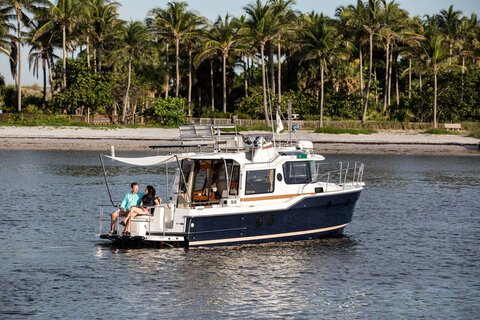
with local dealers to explore models and pricing in your area.
Explore Boat Brands
- Cutwater Boats
- Fleming Yachts
- Ranger Tugs
Use our Boat Loan Calculator to get a better idea of your own budget.
Crunch the Numbers
Looking for a different boat?
Try our Boat Finder
Activities with Trawlers
GREAT FOR Overnight Cruising • Day Cruising
Trawlers are intended for cruising, and many people spend extended vacations taking a trawler boat from port to port. There are also a lot of people who search high and low for the best trawler to live on, and then move aboard.
Long-distance cruising at a leisurely pace
Because trawlers are designed with private staterooms, full kitchens (though we call them the “galley,” aboard a boat), and spacious living rooms (the nautical name for them is “saloon”), trawlers are ideal for people who believe that when it comes to long-distance cruising, half the fun is getting there. Most are designed to cruise in a slow and economical way, so you can enjoy the ride from start to finish.
Cruising the intercoastal waterway
The trawler design is very popular among “snow-birds” who take their boats south down the intercoastal waterway in the winter, then cruise back up it for the summer months. Many people (often retirees) make this trip season after season.
Consuming less fuel—providing exception range
Since the best trawlers for slow and steady voyages need to be fuel-efficient, many builders design them with relatively small powerplants and displacement hulls (boat bottoms which merely slice through the water, rather than using lots of power to break free of the water and skim across the surface at high speed). This gives them exceptional range and if you want a real super trawler, it’s even possible to find some with ocean-crossing abilities. However, if you want the ability to get where you’re going in short order there’s also more than one fast trawler manufacturer out there. Though there’s always a trade-off between speed and efficiency, even a fast trawler often has better fuel economy than many other types of powerboats.
Spacious interior layouts for a great weekend escape
Since trawlers are designed for spending lots of time aboard, even a small trawler usually has the maximum amount of cabin space possible for its size. Some have “aft cabins” built under the rear of the boat, and larger models often have multiple deck levels.
Ownership Costs of Trawlers
The size of the trawler you buy will be the biggest determining factor, when it comes to ownership cost. Remember that the larger the boat is, the more it will cost to rent or lease a slip, too. Finding the best trawler for the money really depends on your personal budget, and how much room you feel you need to live comfortably. Visit our Boat Loan Calculator to learn more about the costs of ownership fitting with into your budget.
Since trawlers tend to get used extensively and sometimes continually, they may have slightly higher maintenance costs than some other types of boats. They also have many of the same systems a house would (like plumbing, electrical, and HVAC). However, these systems are smaller and more contained than those of a house. So, in the long run, maintenance costs likely to be far less than they would with an abode you live in on dry land.
Thanks to their efficiency, unlike many types of powerboats fuel costs associated with a trawler are usually minimal. Instead, the main operation cost is general living expenses – things like food and drink supplies – since so many people spend extended periods of time aboard. In addition, you should also plan in insurance costs (see Insuring Your Boat for more info).
Trawler Boat Technology/Materials/Features
You might guess that their traditional design and heritage means that trawlers haven’t changed much over the years, but that would be a mistake. New hull designs developed an entire genre of trawler dubbed the “slow-fast,” which has the ability to cruise at slow speeds with relatively good fuel efficiency, but can also jump on plane (when most of the boat rises out of the water and skims on the surface), when and if necessary. In other cases, advancements in construction materials has allowed trawler manufacturers to reduce a boat’s weight, without giving up one bit of strength. Modern lighter weight construction techniques have also made it possible to build trailerable trawlers that may be relatively small, but still have all the comforts of home and can be towed by many pick-up trucks and SUVs.
Explore Similar Boat Types
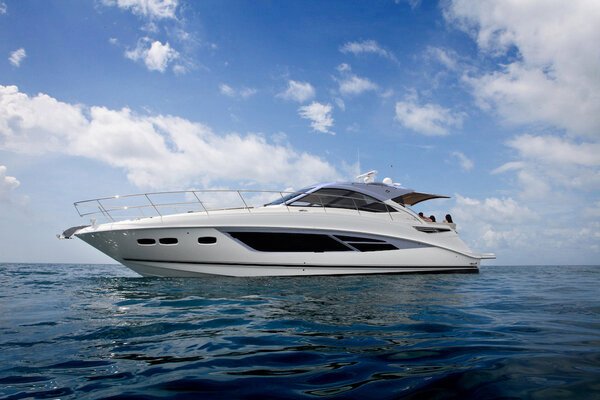
Motor Yacht/Power Cruiser
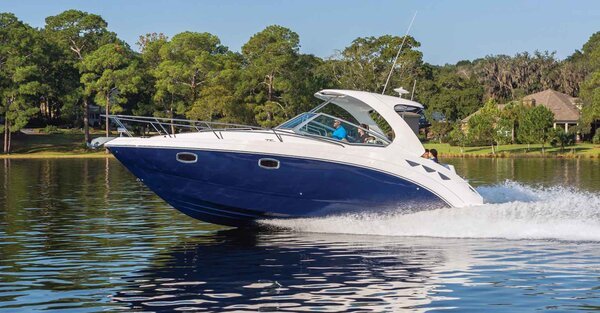
Cabin Cruiser
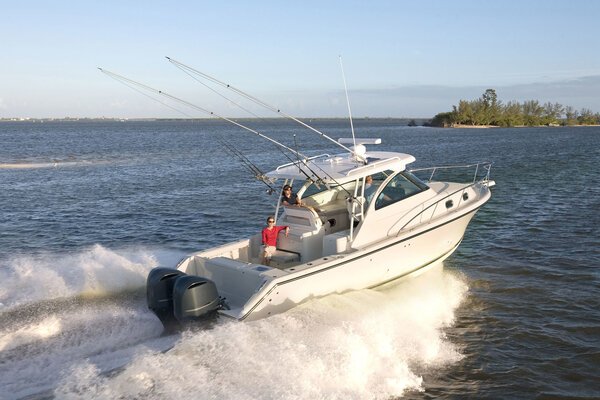
Join Our Newsletter!
Get community news, buying bargains, and how-to guides at your fingertips.

My Cruiser Life Magazine
The Best Boat for the Great Loop in 2023: Your 6 Boat Options
Embarking on this nautical quest called the Great Loop demands more than wanderlust alone. Selecting the optimal vessel to navigate the Loop’s diverse waterways makes all the difference on this marathon route. Whether you covet the comforts of a spacious trawler, prefer the performance of an agile cruiser or need maximum versatility to “trailer hop” inland rivers, the choice of boat profoundly impacts the journey. In today’s post, I give my recommendations the perfect Great Loop boat.
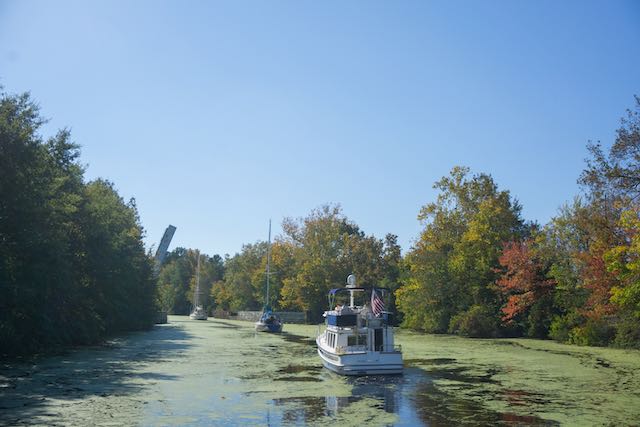
Table of Contents
6 best boat types for the great loop, what is the great loop, what is involved with the great loop boating adventure, classic trawlers, fast trawlers and downeasts, tug style trawlers, cruisers and motor yachts, power catamarans, the boat you’ve got, great loop size limits, comfortable cabin aboard and long-term living space, engine choices: gas vs. diesel, single vs. twin, 1. draft and height limitations, 2. fuel range and efficiency, 3. living quarters, 4. navigability and handling, 5. type of boat, 6. accessibility and safety features, 8. personal preferences and experience level, 9. research and planning, boat requirements for the great loop, which is your best boat for the great loop, best boat for the great loop faqs.
- Unconventional Boats
The Great Loop stands as one of the premier long-term boating adventures in North America, and arguably, across the globe. Spanning over 6,000 miles, this journey offers boaters an experience akin to a cross-country RV road trip, but on water. It presents a unique opportunity to view the countryside through a different lens, as you navigate through a mix of seaways, canals, and rivers at a relaxed pace.
Let’s explore the ideal boats to embark on this remarkable journey.
Let’s get this out of the way – what’s the Great Loop in the first place?
The Great Loop is an adventure for recreational boaters that takes you on a giant circuit of the eastern half of the United States and Canada . It’s the joining of many smaller waterways, open water stretches, rivers, and canals to make an entire journey that’s about 6,000 nautical miles long.
Where you begin and end your Great Loop journey usually depends on where you buy or keep your vessel.
Here’s an overview using Norfolk, Virginia, as the starting point.
- Norfolk northbound through Chesapeake Bay, through the C&D Canal, and seaward on Delaware Bay to Cape May, New Jersey.
- Northbound along the Atlantic coast of New Jersey to New York harbor.
- North on the Hudson River to upstate New York. From here, you have several choices depending on how one wants to transit the Great Lakes and how much of the Canadian Heritage Canals one would like to cruise.
- Westbound through the Erie Canal.
- West through the Great Lakes to Chicago.
- South from Chicago through the inland rivers to the Gulf Coast.
- Eastbound along the Gulf Coast to Florida, then southbound on the Gulf Intracoastal Waterway.
- Either through the Okeechobee Waterway in south Florida or around the tip of the state, through the Florida Keys.
- North from south Florida on the Atlantic Intracoastal Waterway (ICW) back to Norfolk.
There are many choices to make the Great Loop your own adventure.
Loopers usually put between 5,000 and 7,000 miles under their keels while making the trip. However, it’s not a race, and there are plenty of opportunities to make side trips and adventures off the main route.
For example, the Downeast Loop is an extension that adds Maine, Nova Scotia, and Prince Edwards Island. The St. Lawrence Seaway will then take you west to the Great Lakes by way of Montreal. Another good example is extending your trip on the south end by adding an adventure in the Islands of The Bahamas.
For the most part, the Great Loop is a motorboat adventure . There are many open water spaces where you might sail, but it’s often constrained to a narrow navigable channel, making sailing much less appealing. In other words, even sailboats wind up motoring for most of the trip.
Furthermore, the trip transits canals and waterways with many bridge spans, both fixed and opening. The fewer bridges you have to have open for you, the easier your trip. Many fixed bridges mean you’ll have to take the mast off for long sections of the trip.
The trip spans many rural areas, interspersed with small towns and a handful of big cities. Many nights you’ll be anchored or docked in the middle of nowhere. Other times, you’ll have a new city to explore and check out.
Your boat should suit both styles. You will want the best family boat that is comfortable to live on, with sleeping, bathroom, and cooking facilities that you and your crew find comfortable. Yes, you can do the Loop in an open go-fast boat–but you will miss what many consider the best parts of the Loop.
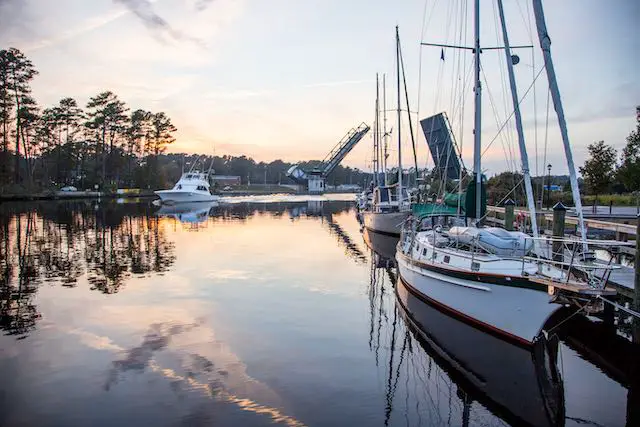
Six Best Great Loop Boat Options By Type of Boat
There are too many makes and models of boats in the world for anyone to make a specific recommendation here. Instead, here is a list of six types of boats you’ll find doing the Loop and what makes them well suited for this particular adventure.
Remember, this is anything but an all-inclusive list. There are hundreds of boat makes out there, hundreds more that aren’t built anymore but can be bought used, and even more when you include custom and one-off designs. These lists are provided simply as a starting point for your research!
The classic trawler is basically the power version of a sailboat–slow-moving, heavy, and economical to operate. They have been around forever; tons were built in the 1970s and 1980s, many in Taiwan. That means that the design is time-tested–they are good-looking and seaworthy. Plus, you can readily find them on the used market for reasonable prices. Most have a maximum speed of about 10 knots.
The popular cruising blog Scho and Jo have set out and completed the Loop on their Albin trawler. Check out their Great Loop expenses for information on the adventure and how it’s done. For more about their boat, check out their boat tour.
Examples of Classic Trawlers:
- Monk 36 (no longer built)
- Grand Banks
- Camino Troll (no longer built)
- Nordhavn 40
The fast trawler is a classic one with a modern hull. Thanks to their improved hull design, they’re capable of faster speeds but use a lot of gas going fast. The best thing about them is probably the simple fact that they can do both comfortably–go slowly and economically or cruise faster (about 15 knots) while still giving a nice ride.
Examples of Fast Trawlers and Downeast Boats:
- Beneteau Swift Trawlers
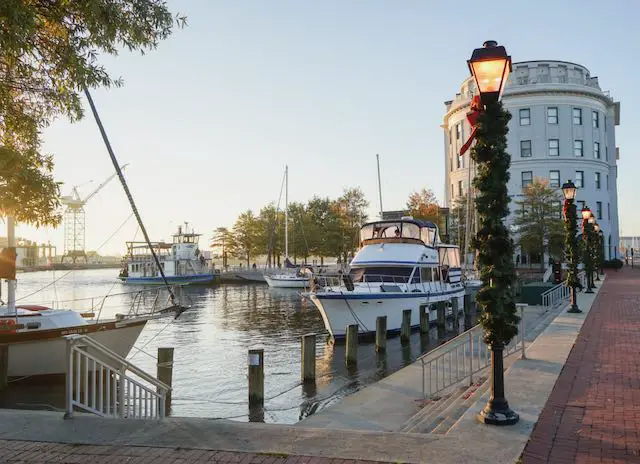
What was once a unique niche in the boating world has caught on, and quite a few companies are now making tugboat-looking trawlers. They’re sportier than the traditional trawler and have an aesthetic that looks right at home on the rivers of the Great Loop.
Examples of Tugs Include:
- Kadey Krogen
- Lord Nelson Victory Tug (no longer made)
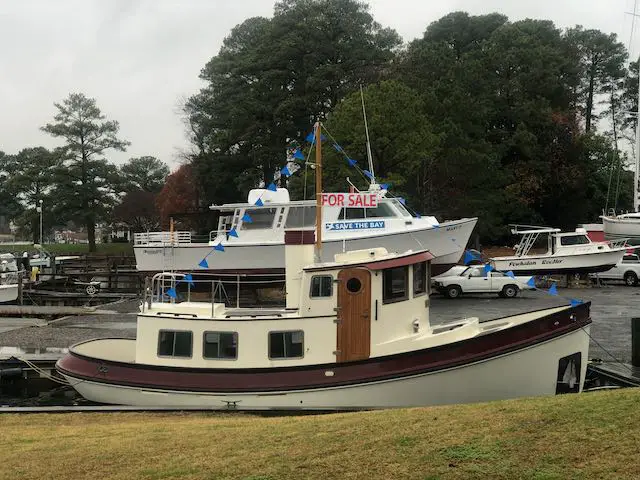
A cruiser is built on a planing hull to go faster. That means more miles per day, fewer nights at anchor, and more fuel consumption while doing it.
There are many sizes and styles that are appropriate for the Loop, so the key is to find the layout that is most comfortable for you. The two most popular styles include express cruisers and aft-cabin cruisers.
Examples of cruisers and motor yachts include:
- Sea Ray (many of the best models for the Loop are no longer made)
- Cruiser Yachts
- Bayliner Motoryachts (no longer built)
- Hatteras Cruisers (no longer built)
Power catamarans are popular for the same reason that sail cats are. Thanks to their increased interior volume, two hulls make for a more comfortable living space. Your beam should be less than 23 feet, as the Trent Severn Waterway in Canada limits this. Still, that leaves several interesting power cats that would make fantastic Loop boats.
Examples of power cats that would be good when boating the Great Loop:
- PDQ 34 Power Catamaran (no longer built)
- Endeavour 440 TrawlerCat
Finally, it has to be mentioned that the best boat is always the boat you’ve got. Lin and Larry Pardey once famously said, “Go small, and go now.” If the Loop is on your bucket list, it’s better to find a boat you can get your hands on that will suit you well enough to travel and enjoy the ride. Don’t spend years saving up for a “maybe adventure.”
Examples of unconventional Looper boats:
- Jet skis that camp along the way
- Open runabouts, sport boats, and fishing boats
- Sailboats–just take the mast off and motor like a trawler!
- Trailerable boats that do it in sections–a trailerable boat lets you do a section and then tow the boat to the next section to cruise at your leisure
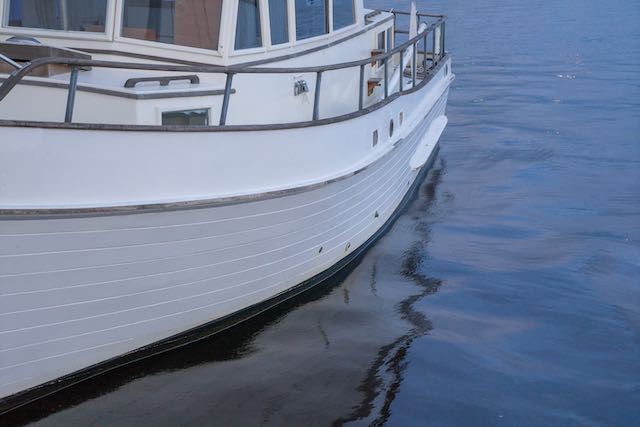
What Features Make Good Looper Boats?
So, how do you ever choose the right boat for the Loop? Here are some thoughts on what features make the best Looper boats.
The limits for your perfect Looper boat will be based on its physical dimensions. According to the Loop Cruiser’s Association, the average looper boat is 39.5 feet long, with more than half between 35 and 45 feet. But this doesn’t tell the whole story, as you must consider each vessel’s dimension.
Air Draft (Bridge Clearance or Height Above Water)
The most limiting fixture on the Loop is a fixed railroad bridge in Chicago that will block any vessel taller than 19 feet, 6 inches.
But, if you want to do the entire Erie Canal, two bridges offer only 15 feet, 6 inches. Another bridge in downtown Chicago is 17 feet. So, the Loop has lower limits, but most can be gone around by bigger boats.
Four feet or less of draft is ideal and will mean the fewest problems–although caution is still warranted in many areas. Draft is how deep the hull sits in the water and dictates the minimum water depth for a boat . Any deeper than that, and you will need to be extra cautious. Boats with six-foot drafts have reportedly done it, but few recommend it.
The width of your boat is usually limited to about 16 feet due only to marina slips.
Catamarans with 23 feet or less can make the trip but require T-heads at most marinas. As a result, finding slips on this trip will be difficult, and finding a place to haul out for boat maintenance is even harder. In addition, there are sections where you’ll need to take a slip occasionally, so anchoring isn’t always an option.
There’s no limit to length. Some yachts up to 70 feet have made the journey, but it’s a tight fit and most boats that long won’t make it under the bridges. Most Looper boats are under 50 feet, after all, for many reasons.
Think of the Great Loop as an RV adventure where you’re taking your home with you. To that end, realize you’ll be spending a lot of time living aboard your boat. Therefore, the boat should be comfortable, with indoor and outdoor living space and all the amenities you’d want or need.
Here’s a list of things most people want their boat equipped with when they set off on the Great Loop. Many of these are similar to the considerations people make when living on a sailboat , but some are quite different.
- A comfortable bed, usually an “island queen” (not a v-berth)
- A large galley (kitchen) with plenty of cooking space and the appliances they’re used to (fridge, microwave, coffee maker, stove, oven, etc.)
- A comfortable living room (salon) that has a good view, lots of light, and plenty of ventilation
- An outdoor patio (cockpit) area for open-air dining, socializing, and relaxing
- A descent-sized bathroom area with a separate shower
- Air conditioning and heating (which may require a generator if you plan to anchor overnight extensively)
- Inside and outside helm positions (upper deck on a trawler)
Tankage refers to your boat’s storage space for liquids–water, fuel, and sewage. The larger the tanks are, the longer you can stay away from marinas for refills or pump-outs.
The Loop has several long stretches through the inland river system that go hundreds of miles between facilities and services. Therefore, your boat should have a fuel range of at least 450 nautical miles and hold enough water for at least a week.
Some river stretches have fewer gasoline sellers, meaning gas-powered boats need a greater range than diesel boats. They’ll need about 450 miles of range, whereas diesel boats can get by with less.
Beyond that, gas and diesel engines will both work fine on the Loop. Generally, the most popular trawlers and boats of this size come with diesels, which are praised for their longevity and reliable, simple operation. In addition, diesel is safer on a boat because it is less explosive, which could lower your insurance premiums.
Likewise, having a single or twin screw boat is a matter of preference. Single-engine boats can make the journey without problems, but two engines give you redundancy should something go wrong with one and better maneuverability in tight spaces. But, of course, operating and maintenance costs are higher with two engines.
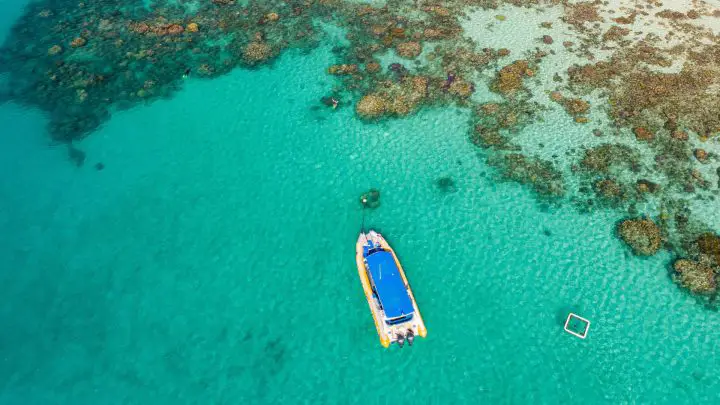
How to Find the Best Boat for You for Sailing the Great Loop
The ideal boat will vary based on personal preferences, budget, and specific requirements for the journey. Here are key considerations to help you find the best boat for your Great Loop adventure:
- Draft: The Great Loop has areas with shallow waters, especially in places like the western rivers and parts of the Intracoastal Waterway. A boat with a shallow draft (ideally less than 5 feet) will have more flexibility and fewer navigation concerns.
- Air Draft: Bridges with fixed heights are a consideration along the Great Loop. To avoid detours, your boat’s air draft (the height from the waterline to the highest fixed point on the boat) should be less than 19 feet, though lower is often better to accommodate all routes.
- Opt for a fuel-efficient boat that has a range of at least 300 miles to comfortably reach fueling stations along the Loop without anxiety, considering both the boat’s fuel capacity and its consumption rate.
- Comfort is key for the long journey. Look for boats that offer adequate living space, a functional galley, comfortable sleeping quarters, and sufficient storage. The size and amenities should match your tolerance for space constraints and your lifestyle needs.
- Choose a boat that handles well in various water conditions. Both inland rivers and lakes, as well as coastal sections of the Loop, can present challenges like currents, tides, and weather changes.
- Trawlers, Sailboats (with a retractable mast for bridges), and Motor Yachts are popular choices because they balance living space, fuel efficiency, and navigability.
- Sailboats can offer the advantage of wind power but consider the need to lower the mast for certain sections of the Loop.
- Catamarans are another option, offering stability, shallow draft, and spacious living areas, but be mindful of their beam (width) and how it may limit access to certain marinas or slips.
- Look for boats with easy access to the bow and stern, strong handholds, and a cockpit or helm that offers good visibility and protection from the elements.
- Safety features should include reliable navigation and communication systems, life-saving equipment, and possibly a dinghy for exploring shallow or narrow areas.
- Consider both the purchase price and the ongoing costs, including maintenance, fuel, marina fees, and potential upgrades. Buying a used boat can be a cost-effective option, but ensure a thorough inspection to assess its condition and suitability for the Loop.
- Your comfort with the boat’s operation, maintenance requirements, and overall feel is crucial. Choose a boat that fits your level of boating experience or one that you’re willing and able to learn to handle confidently.
- Join forums and groups, such as America’s Great Loop Cruisers’ Association (AGLCA), to gain insights from experienced Loopers.
- Consider renting or chartering different types of boats for short trips to gain firsthand experience before making a decision.
- Size/Draft: Boats should generally be less than 60 feet with a draft of 6 feet or under to navigate the various locks, rivers, and waterways along the route.
- Propulsion: Twin engines or a single engine with a bow or stern thruster provides the best maneuverability and redundancy for covering long distances.
- Fuel Capacity: A range of 350-400 miles between refueling is recommended to have a buffer given the distances between marinas in some regions.
- Accommodations: Comfortable sleeping quarters, a functional galley, and enclosed head are needed for multi-day and multi-week trips.
- Hull Type: Displacement hull trawlers, cruisers, and motor yachts are well-suited for the journey. Planing hulls can complete it but will take a fuel efficiency hit at slower canal speeds.
- Navigation: GPS chartplotters, radar, depth finders, and other instruments and marine electronics for navigating varying conditions.
- Operation: Vessel and systems should be completely reliable and redundant where possible given the several thousand mile journey.
- Insurance/Documentation: Vessel documentation and insurance is required for coastal, Great Lakes portions.
| Boat Type | Benefits |
|---|---|
| Classic Trawlers | – Time-tested, seaworthy designs – Spacious living spaces – Fuel-efficient at lower speeds |
| Fast Trawlers & Downeasts | – Capable of higher cruise speeds – Modern hull design for good ride quality – Blend classic trawler aesthetics with better performance |
| Tug-Style Trawlers | – Unique, tugboat aesthetic – Often more nimble and sportier – Well-suited for river sections |
| Cruisers & Motor Yachts | – Planing hulls allow higher speeds – Express and aft-cabin layouts optimize living space – Travel greater daily distances |
| Power Catamarans | – Exceptional living space for size – Twin hulls provide stability underway – Shallow draft helps navigate rivers |
| Unconventional Boats | – Use whatever boat you currently own – Open up the Loop to more budget-conscious boaters – “Go small and go now” |
Hopefully, this article has provided some ideas and examples of what your best Great Loop boat might be. Beyond a few hard limitations, it’s a matter of taste and style. There’s no right or wrong answer–you’ll often see many unexpected vessels doing the Loop.
If you’re considering the Loop, check out the America’s Great Loop Cruisers Association for more details.
What size boat is best for the Great Loop?
There’s no set size limit for length, but all boats looking to complete the Loop must pass under a low fixed bridge in the Chicago area. If your boat is more than 19 feet, 6 inches above the water, thou shall not pass.
What is the largest boat to complete the Great Loop?
Some people have reported that boats as long as 70 feet have completed the Loop. But taking a vessel of this size is not recommended, as you must navigate numerous tight locks and low bridges along the route. Most Loopers choose boats less than 50 feet long.
What is the smallest recommended boat for the Great Loop?
The smallest boat is the one that you’re comfortable on. Jet skis have completed the Loop, but they’re limited to staying in hotels or camping. It’s best to have a boat that will be comfortable to live on for the better part of a year. Most people want a boat at least 35 feet long to do that.
What is the average time to complete the Great Loop?
Most cruisers take about a year to do the Loop. Several factors affect this plan, and it’s always an individual choice. Generally, you’ll be northbound in the spring to be westbound through the Great Lakes in the summer. Then you “fall down” the rivers in the autumn so that you can over-winter in Florida. But many people take breaks, leave their boats in storage, and complete the Loop in sections. Furthermore, many folks want to take their time and enjoy the scenery. It’s not a race, after all.
Matt has been boating around Florida for over 25 years in everything from small powerboats to large cruising catamarans. He currently lives aboard a 38-foot Cabo Rico sailboat with his wife Lucy and adventure dog Chelsea. Together, they cruise between winters in The Bahamas and summers in the Chesapeake Bay.
Leave a comment
Your email address will not be published. Required fields are marked *
Save my name, email, and website in this browser for the next time I comment.
- Articles and Guides
The World’s Best Yacht Brands
19th jul 2024 by samantha wilson.

Even to those in the industry, the definition of the term “ yacht ” often falls in a gray area. What one defines as a yacht, another may refer to as a boat. This ambiguity is an accepted oddity within the yachting world and while there are some broad definitions, there are no firm rules.
Where the industry generally unites is in defining that recreational vessels over 80 feet are classed as superyachts, although even there, some will hold out for 100 feet. Boats below 80 feet become more difficult to define. A luxury sportfishing boat is unanimously considered to be a yacht, as are modern luxury trawlers. But in many quarters, most boats over 30 feet are classified as a yacht if they have a quality, “yacht-like” finish. This can include small motoryachts, cabin cruisers, well-appointed center consoles, and express or open sportfishing models . Sailboats are also widely referred to as yachts when even shorter than 30 feet, perhaps because cruising sailors are frequently known as “yachties.” Virtually all larger sailboats with cabins and galleys are called yachts.
Which brings us to the other definition of a yacht, and that is the level of luxury it possesses. A simple, mid-sized fishing boat that’s a little rough around the edges is unlikely to ever be graced with the name “yacht”; the finishings, the furnishings, the electronics, the decks, the cabins, galleys, and general outlook of the boat play a significant role in it being given the title of yacht.
Let’s take a look at the many different types of yachts on the market today and look at some of the best yacht brands building them. It’s important to remember that there are a huge number of luxury boat brands all across the world, and this is just a small selection.
Best Motor Yachts
The term motor yacht can describe any luxury recreational vessel from 30 feet up to the largest superyachts, but is typically used for mid-sized cruisers from 30 to 80 feet in length. They’ll have cabins, galleys, saloons, and heads; they’ll have a high-end finish, plenty of space for sun lounging, and be geared towards families and weekend cruising.
Best Motor Yacht Brands
Sunseeker: With its origins in the 1960s, this British brand of motor yachts has an extensiveline-up (and even more models on the used market). Models range from mid-sized to superyacht scale, and they have both a luxury finish and a sleek, distinctive appearance. Sunseeker boats for sale
Riva Yachts: The Riva Yachts brand has a long history and for decades has been synonymous with fine Italian craftmanship. Today it is owned by Ferretti Group and offers a range of sleek, elegant motor yachts that honor its classic heritage. With a current range including Sportfly, Flybridge, and Open models, it remains one of the most prestigious brands in the industry. Riva boats for sale
Princess Yachts: Another British brand, Princess Yachts builds fine motor yachts from midsize to superyacht size. The company was founded in the 1960s and operates out of a huge, 1.1 million square feet shipyard. Its luxury motor yachts are some of the most technologically advanced for their size in the industry. Princess boats for sale

The term motor yacht covers a wide range of sizes and styles of vessels, but is usually used for motor boats between 30 and 80 feet. Princess photo.
Best Sailing Yachts
In an era where motor yachts dominate the waters, it’s easy to forget momentarily that sailboats were the very first yachts. Over around 30 feet they fall into the yacht category, with cabins, galleys, and heads making them suitable for longer-range cruising. The rigging and sails tends to make little difference to sailing yacht classification, but rather the vessel’s ability to cruise farther and longer and in more comfort and luxury. Sailing yachts for sale
Best Sailing Yacht Brands
Hallberg-Rassy : The long-standing Swedish brand Hallberg-Rassy has an impressive line-up of quality ocean-going sailing yachts that offer sturdy blue-water capabilities and comfortable, elegant interiors. The brand has a range of models from 34 to 69 feet that are excellent long-distance cruisers. Hallberg-Rassy boats for sale
X-Yachts: Offering top performance in both their competitive and cruising models since 1979, the Danish X-Yachts brand has long been admired on both sides of the Atlantic Ocean for quality boats and excellent sailing capabilities. While best known for their racing models, the X-Yachts team now offers bluewater performers up to 56 feet overall in length. X-Yachts boats for sale
Jeanneau : Jeanneau has been building capable, innovative ocean-going sailing yachts for over 60 years and has gained a great reputation for innovative design and good sailing performance. The brand’s current range includes large yachts, small ocean racers, and 35- to 49-foot cruising models that are cleverly designed, perform well, offer excellent handling, and are relatively affordable. Jeanneau boats for sale
Beneteau: While Groupe Beneteau owns and builds an array of both motor yachts and sailing yachts (including Jeanneau, above), its flagship Beneteau brand is known for building and selling more sailboats every year than any other brand. The company offers spacious, modern cruising and luxury models 30 to 60 feet in length, and well-respected performance models 14 to 53 feet. Beneteau boats for sale

The classic sailing yacht offers home comforts, cabins, and long-range capabilities. Hallberg-Rassy photo.
Best Luxury Yachts
The term luxury yacht can define any vessel that offers an exceptionally high-quality finish, luxury furnishings, and is generally a cut above the rest. The term luxury can apply to all styles of boats that we look at in greater detail on this list, including cruisers, modern recreational trawlers, sportfishing yachts, superyachts, motoryachts, and sailing yachts.
Best Luxury Yacht Brands
Azimut: The Italian Azimut|Benetti Group brought together two of the top brands in Europe in 1985 and has grown to be one of the most respected luxury brands in Europe and the US. While Benetti builds superyachts exclusively now, Azimut builds seven lines of models ranging 42 to 125 feet and outboard-powered to hybrids, flybridge speedsters to trawlers and larger motoryachts. Azimut boats for sale
Sunreef: Builder of power and sailing catamarans in Gdansk, Poland, Sunreef Yachts started as a yacht charter agency and then began building luxury, ocean-going, flybridge-equipped catamarans in 2003. Today, with a new, dramatically larger factor and heavy investment in energy-independent technologies, Sunreef power and sail models range from 44 to 100 feet, and a superyacht range is well underway. Sunreef boats for sale
Sanlorenzo: The Sanlorenzo shipyard has been building high-quality motor yachts since 1958 and offers a range of sophisticated, custom luxury yachts. Its Yacht Series ranges from 78 to 120 feet in length, while the Superyacht Series offers yachts up to 220 feet. Sanlorenzo boats for sale
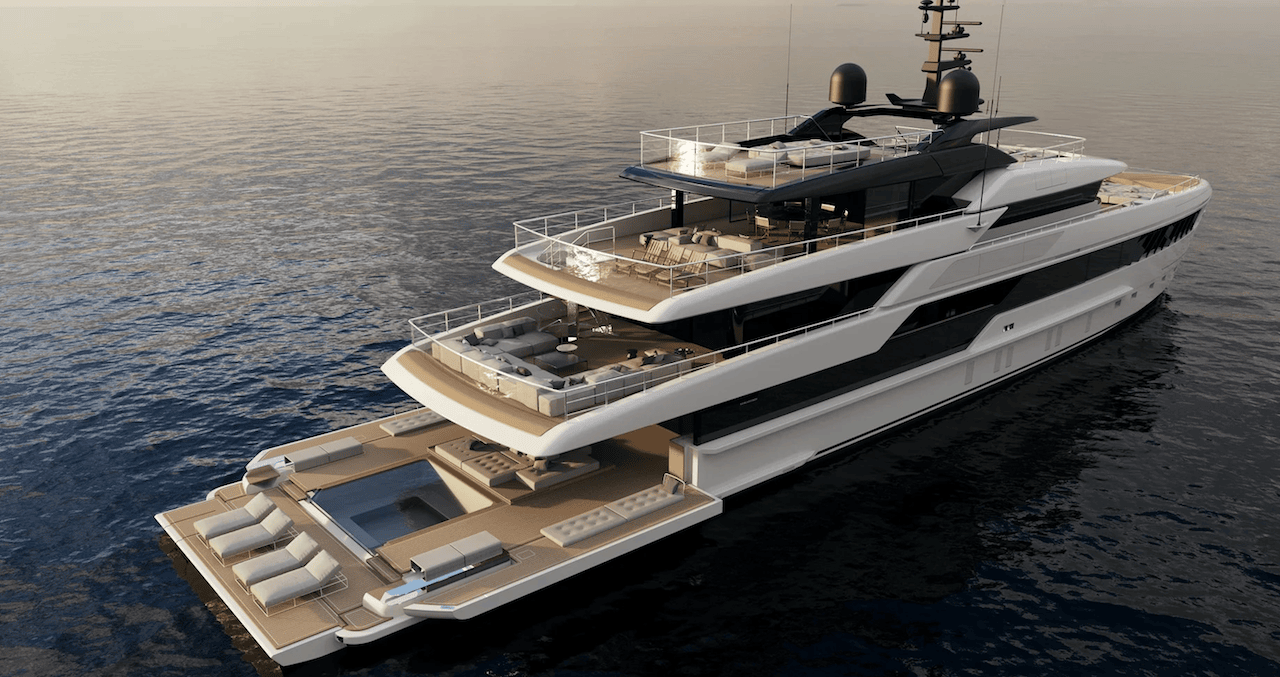
Luxury yachts can be of many types and sizes including cruisers, modern recreational trawlers, sportfishing yachts, superyachts, motoryachts, and sailing yachts. Sanlorenzo photo.
Best Superyachts
Superyachts are generally categorized as yachts (both motor and sail) over 80 feet, and they are typically the largest and most luxurious vessels in the world costing millions of dollars. The heart of the superyacht manufacturing industry is in Europe, with many of the world’s top brands based in Italy, France, the Netherlands and Germany, but with builders in the United States, United Kingdom, and Asia also making big waves. Superyachts set the bar for the boating industry, pushing the boundaries of innovation and engineering.
Best Superyacht Brands
Lürssen: German brand Lürssen have their finger on the pulse of innovation, and their huge luxury yachts pave the way for the industry as a whole. Lürssen has built some of the largest and most expensive luxury yachts in the world including 511 feet-long Dilbar .
Feadship: Dutch brand Feadship is a major player in the superyacht world, and has built some of the largest luxury vessels including Anna at 360 feet. It was founded over 70 years ago as an alliance of several shipyards and continues to challenge itself to create ever-more daring and innovative vessels. Feadship boats for sale
Oceanco: Another Dutch builder, Oceanco, focuses on superyachts in the 80 meter range, with their largest being Infinity at 374 feet featuring seven decks and luxuries including a spa, sauna, gym, and yoga studio.
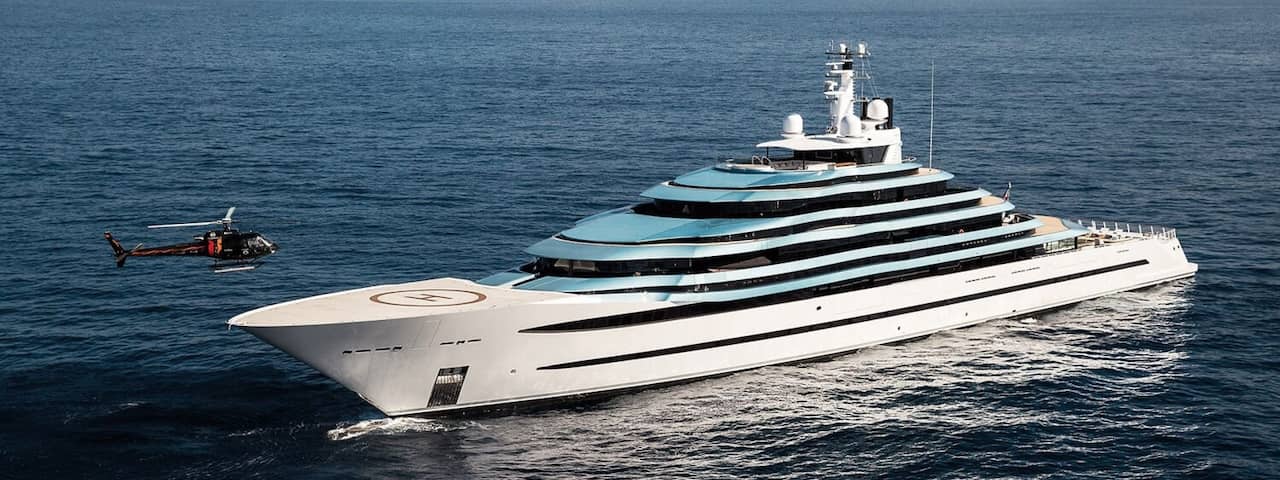
Superyachts are the largest and most luxurious of all the vessels and can range from 80 feet to more than 300 feet in length. Oceanco photo.
Best Small Yachts
Pocket yachts offer the best of both worlds, with clever use of interior and deck space providing versatility, overnight stays, and comfort for family and friends aboard. And all in a compact and often more affordable package. Larger doesn’t always mean better, and these brands are proving just that with their small yachts.
Best Small Yacht Brands
Hinckley Yachts: Dating back almost a century as a sail and power yacht builder, Maine-based Hinckley Yachts now produces elegant pocket cruiser yachts. Its Picnic Boat range of models 37, 39 and 40 feet in length combine classically beautiful lines, cutting edge technology, and a finish of rich woods and plush seating. The jet-powered boats provide a quiet, smooth, and fast ride, as well as exceptional comfort both inside and on deck. Hinckley boats for sale
Chris-Craft: For those wanting to buy a boat with true yacht looks and power, you can’t go wrong with the all-American brand Chris-Craft. While its range of models are smaller in size than many others on this list, its 34-foot Catalina and 35-foot Calypso certainly fit in the yacht category with small interior cabins and heads. Chris-Craft boats for sale
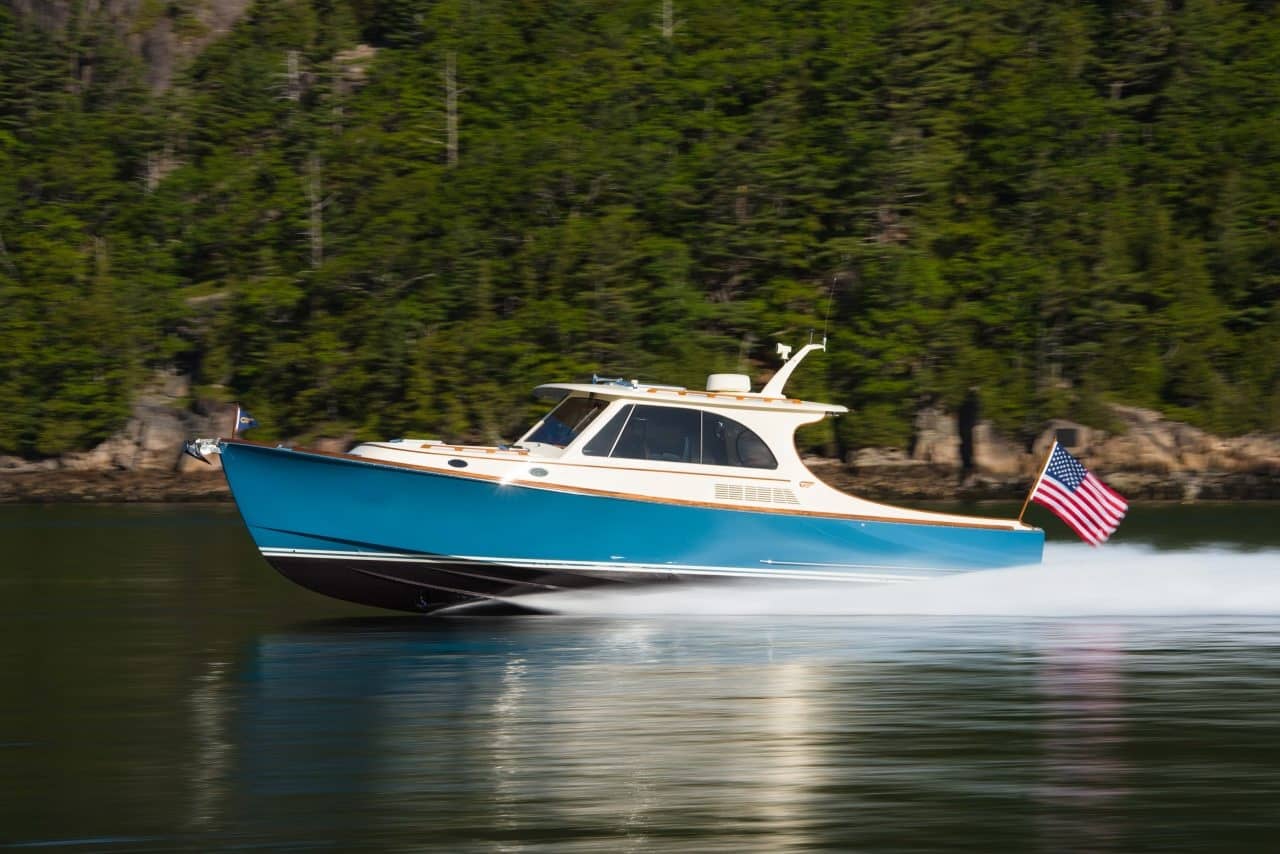
Small yachts, or pocket cruisers, offer the chance to experience the yachting lifestyle in a more compact package. Hinckley Yachts photo.
Best Affordable Yachts
Yachts are a luxury asset, and whenever we talk about affordability it ultimately comes down to a buyer’s personal budget. Of course, buying a used boat is always going to be more cost effective than a brand new one, but there are also yacht brands that focus on quality and value-for-money affordable yachts including:
Best Affordable Yacht Brands
Ranger Tugs: Ranger Tugs is one of the most affordable yacht brands, with a great choice of family-friendly pocket yachts and long-distance cruisers. The R-23, in particular, has been built with price at the forefront and allows buyers to purchase an excellent trawler boat at well under the price of most competitors. Ranger Tugs boats for sale
Cutwater Boats: While Cutwater describes its vessels as boats, we feel the size range and finish of their cruising trawlers qualifies them for yacht status. They are functional, reliable, and affordable, with a quality finish and plenty of home comforts making them good value-for-money. Cutwater boats for sale
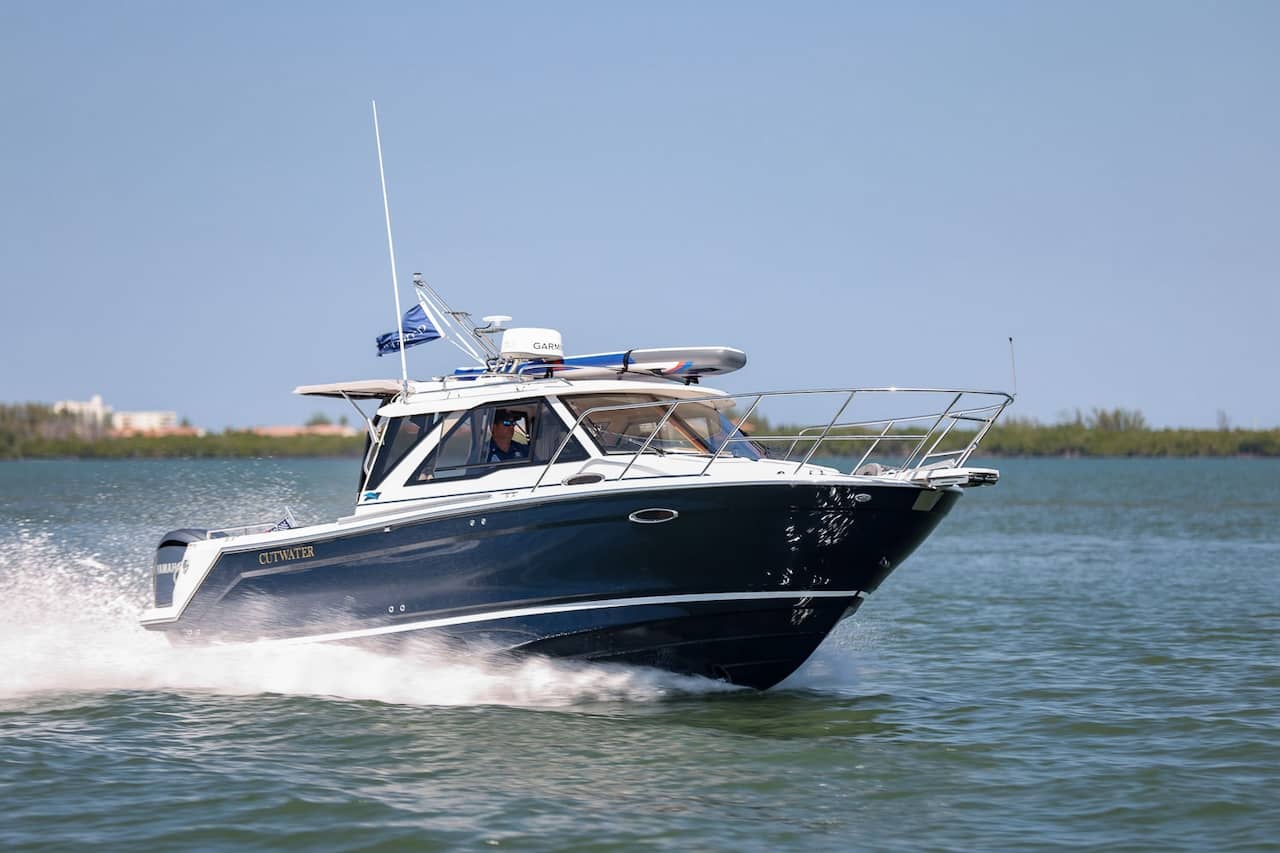
There are brands which offer excellent value-for-money yachts, with high quality workmanship and finishes at lower cost than the competition. Cutwater photo.
Best Sportfish Yachts
The sportfishing yacht market is booming in the United States, with the popularity of these mean fishing machines growing year on year. Sportfishing yachts are characterized by their speed and reliability, as well as offering plenty of fishing amenities, comfort, and a great driving experience. There are many brands out there to choose from, with some of the major players including:
Best Sportfish Yacht Brands
Scout Boats: Scout’s center console sportfishing yachts are some of the most luxurious in the industry. With models ranging from 17 to 67 feet, they offer accommodation, large horsepower, as many as four outboard engines, spacious flybridges, and all manner of fishing accessories. These sportfishing yachts combine cruising comfort with serious offshore angling to create a multi-functional cruising yacht. Scout boats for sale
Boston Whaler: No list would be complete without Boston Whaler on it, so popular is this all-American brand and its stellar reputation. In its current line-up the Conquest, Realm, and Outrage ranges offer models which easily fall into the over 30-foot luxury yacht category, with multiple, hefty horsepower engines, all the offshore fishing equipment you can imagine, and a beautiful finish. Boston Whaler boats for sale
Viking: Head-turning, luxurious, and seriously powerful, Viking Yachts’ range of sportfishing yachts is one of the best in the industry. The family-run brand has a huge line-up, with nearly 20 models ranging from 38 feet to a whopping 90 feet including convertibles and enclosed flybridge yachts, each one finished to an incredibly high spec. Viking boats for sale

Sportfishing yachts combine comfort and high speeds with exceptional offshore fishing capabilities. Viking Yachts photo.
Best Trawler Yachts
The slow, sturdy trawler has had one of the most impressive makeovers of any vessel. Once considered a fishing boat workhorse, today they are one of the most sought-after long-distance cruising yachts on the market. These impressive ocean-going yachts offer luxury, comfort, space, speed and fuel-efficiency in one highly capable and attractive package. Today’s trawler yachts are differentiated by their iconic silhouette resembling a mini superyacht.
Best Trawler Yacht Brands
Nordic Tugs: These American-built trawler yachts are the epitome of what today’s trawlers can be: luxurious, long-range and spacious. They’re anything but a tug boat, and built with meticulous attention to detail creating reliable, adventure-bound cruisers. Nordic Tugs boats for sale
Outer Reef Yachts: Designed to suit their owners, these semi-custom long-range cruisers have been built in Taiwan for Outer Reef in the US for more than 20 years. Interiors display extraordinary craftsmanship, whether the yachts are 58 feet or more than 100 feet long. Outer Reef boats for sale
Grand Banks: One of the pioneers of the cruising trawler, Grand Banks have brought these hugely popular yachts to superyacht levels in a compact package. They have six decades of boat building under their belt, offering reliability, customer service and forward-thinking ideas. Grand Banks boats for sale
Nordhavn: Nordhavn produces well-engineered, high-performance trawler yachts ranging from 41-foot pocket cruisers to 120-foot superyachts. Yet each one always retains its trawler image, which has been Nordhavn’s signature look for several decades. Nordhavn boats for sale
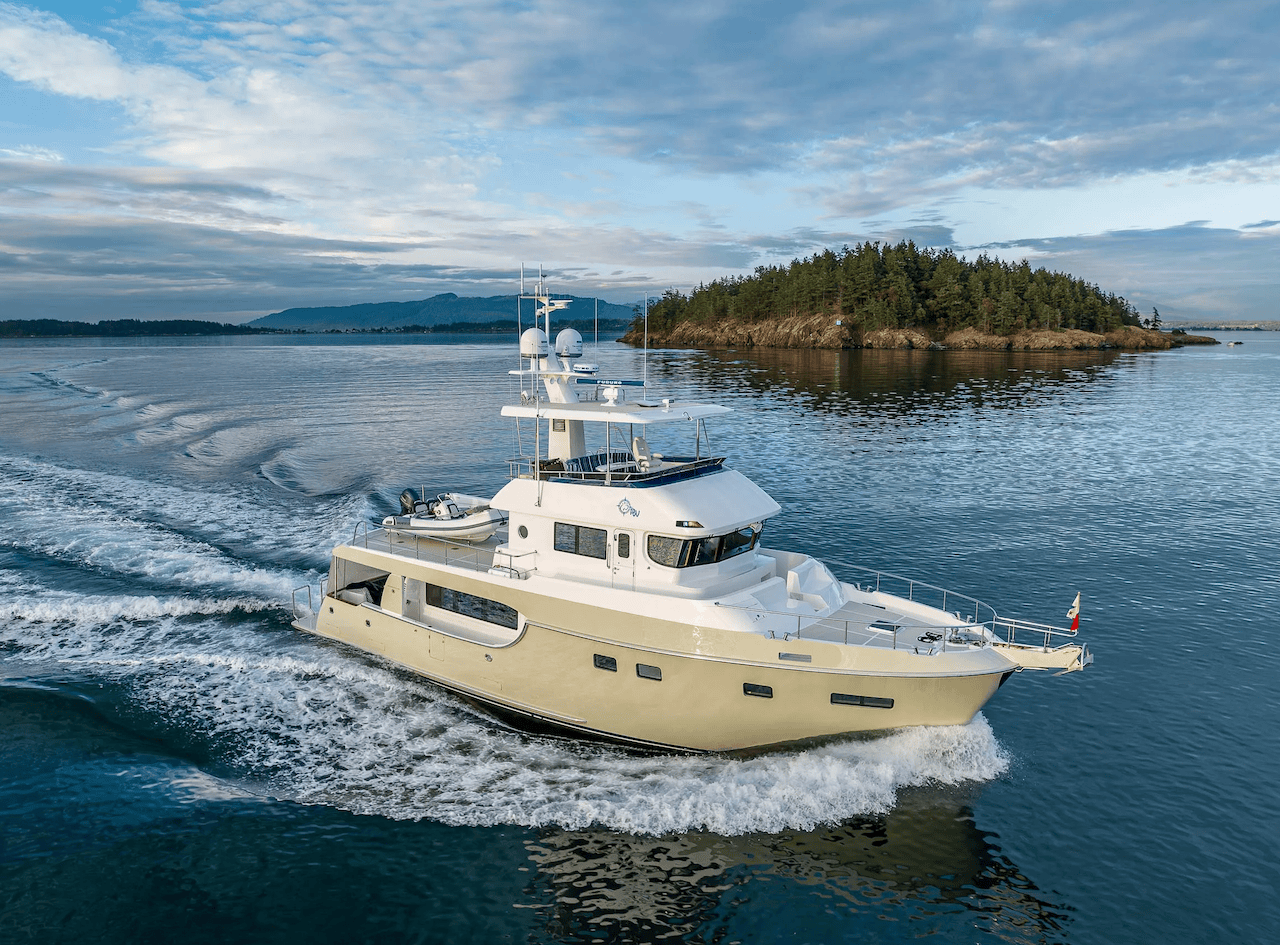
Modern recreational trawlers are long-range spacious yachts which make good liveaboards or for off-grid explorations. Nordhavn photo.
Best Sport Yachts
The sport yacht (or sports cruiser as it is also commonly referred to) brings speed, adventure, versatility, and comfort to the table in huge measures. They range from around 30 feet all the way up to 80 feet and, while there’s no hard and fast criteria to define them, are usually sporty-looking powerboats with an open cockpit, a forward cabin forward, and no flybridge.
Best Sport Yacht Brands
Axopar: Finnish brand Axopar simply exudes adventure with its range of hardy yet elegant sports boats. With distinctive angular styling and a forward-thinking multifunctional and modular concept, its boats allow owners to travel farther and do more. Its largest 37-foot and 45-foot models offer everything from watersports to overnight trips, navigating inclement weather, transporting on-land adventure sports equipment and more. Axopar boats for sale
Sea Ray Boats: Sea Ray has been building some of the best sport cruiser yachts in the US since its founding in 1959. Today it remains one of the most popular, with a strong focus on customer service and satisfaction, as well as attention to detail. While most of its current models are smaller (and more affordable) than others on this list, its hugely popular Sundancer series offers models up to 37 feet with outboard and stern-drive configurations and a strong emphasis on interior and deck space. Sea Ray boats for sale
Tiara Yachts: Tiara Yachts was founded in 1974 and is highly regarded as one of the premier sport yacht builders in the industry. Its models range from 34 to over 60 feet, with a choice of inboards and outboards. Features such as huge side swim platforms, rotating cockpit seating and dinettes, impressive fishing accessories, and accommodations for up to four people, they are as sporty as they are luxurious. Tiara boats for sale
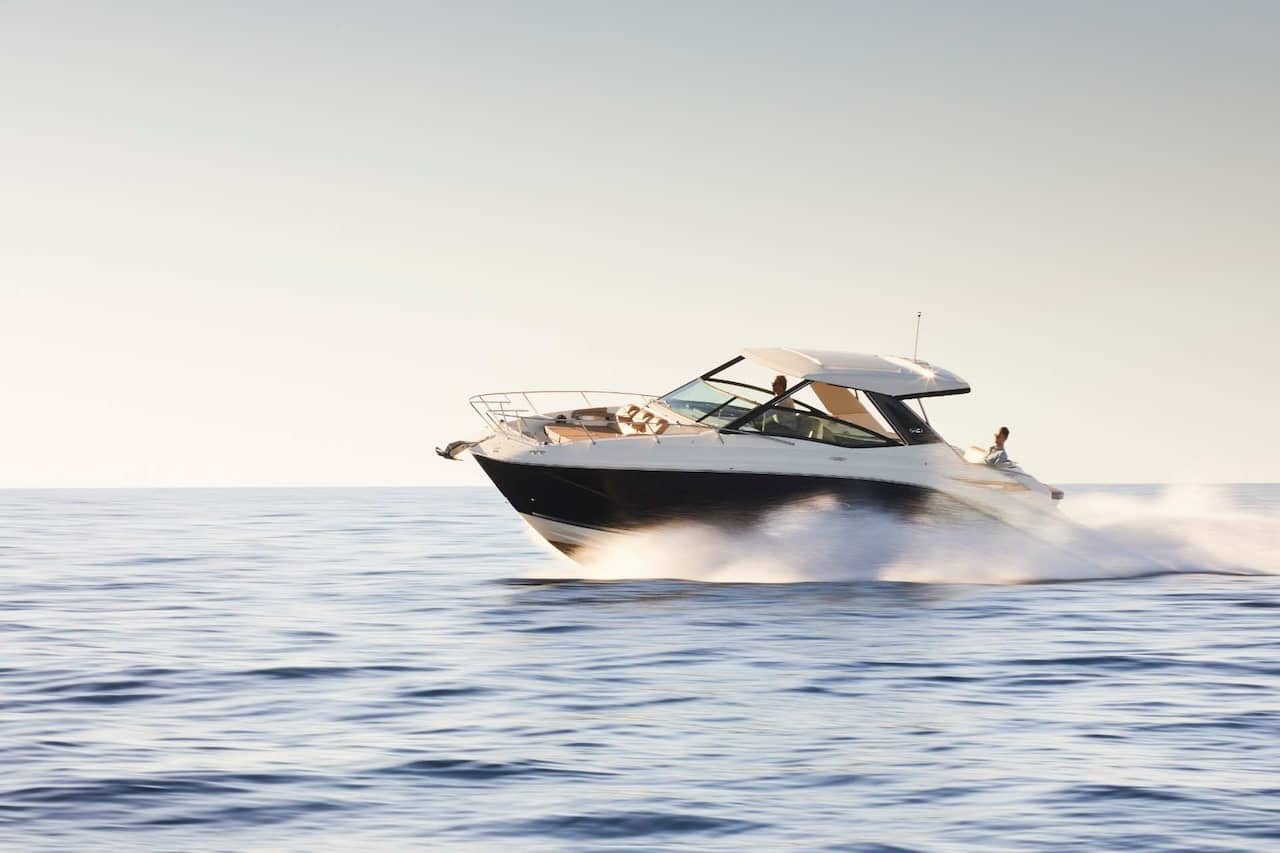
Racy looking sports yachts offer speed, adventure, versatility, and comfort. Sea Ray photo.
This article was published in March 2023 and updated in July 2024.
Written By: Samantha Wilson
Samantha Wilson has spent her entire life on and around boats, from tiny sailing dinghies all the way up to superyachts. She writes for many boating and yachting publications, top charter agencies, and some of the largest travel businesses in the industry, combining her knowledge and passion of boating, travel and writing to create topical, useful and engaging content.

More from: Samantha Wilson
Related Articles and Guides
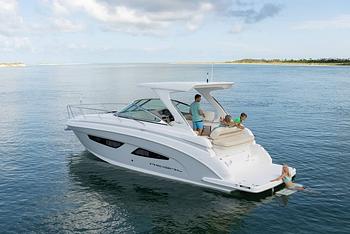
6th Sep 2024
The Best Mini Yacht Brands for Cruising and Luxury
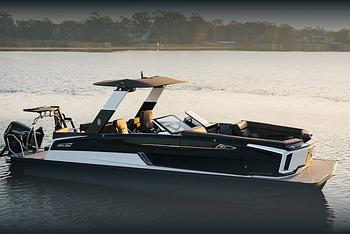
16th Aug 2024
Best Luxury Pontoon Boat Brands Have it All: Glamor, Speed, Fishing, Waterslides...
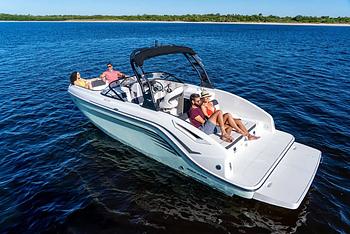
10th Aug 2024
Deck Boat vs. Bowrider: Which Runabout is Best?
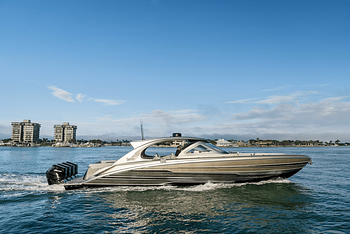
12th Jul 2024
Top Performance-Boat Brands, Where There’s Something For Everyone

- Explore Rightboat
- Boats for Sale
- Boating Articles
- Buyers Guide
- About RightBoat
- Sell Your Boat
- Boat Selling Advice
- All manufacturers
- All categories
- Are you a broker/dealer?
- Learn more about the Rightboat:HUB
Enter your email to keep up to date with the latest news
Join for free
Sign up now for free and discover how easy it is to keep up to date with THE latest boats for sale. Find your right boat, and tailor your voyage to finding your next boat.
Benefits of becoming a member:
- Set up tailored alerts
- Personalise your experience
- Download full specifications and broker details
- Keep tabs on your favourite boats
Are you a broker? Join as a Broker
Rightboat - join for free.
Do you have an account already? Login
Save this search
Save your search and receive new boats in your email..
You can unsubscribe from your alerts whenever you like. By pressing the button you accept the Legal Terms and conditions

IMAGES
VIDEO
COMMENTS
A review of 15 trawler and trawler-style yachts from different builders, sizes and features. Learn about the pros and cons of each model, from Nordhavn 96 to Marlow 58E, and see photos, videos and specifications.
Find out the best trawlers to live on for extended or indefinite journeys. Compare the features, speed, design, and comfort of 10 different trawler models from Kadey-Krogen, Beneteau, Fleming, and more.
Notable brands. Beneteau: Beneteau's Swift Trawler range is one of the best on the market under 60 feet and is a true mini superyacht in many ways. With buckets of interior space to comfortably accommodate up to seven people on models such as the 41, they are also excellent on fuel consumption.
Most of them retail for $500,000+. The Ranger Tugs R-23, however, was designed with the price-conscious boater in mind. At a base price of only $115,000, this trawler boat delivers outstanding value for money. It is powered by a 200hp Yamaha outboard engine and has a very open and airy feeling about it.
Efficient, Quiet and Comfortable. Fleming Yachts 65. Fleming Yachts' 65 is remarkably popular with boaters because she's a trawler/long-range cruiser that not only looks the part but is the gold standard in this segment of the industry. With twin MAN I6 800 inboards, she has considerable range at displacement speeds.
It can be powered by a variety of engines, still has good load carrying and accommodations, has reduced draft, and provides many—if not all—of the benefits of the full displacement trawler yacht. Most trawlers in our cruising community are of the semi-displacement type, and brands like: Grand Banks. Nordic Tugs.
Bering 76 sea trial review: The Turkish trawler yacht with globetrotting ambitions. Numarine 22XP review: This long-range trawler explorer is a sign of the times. ... Sirena 68 review: Is this the best model yet from the fast-growing Turkish yard? Review Price: £1,630,000.00. Photos: Nicholas Claris
There are dozens of boat manufacturing brands and trawler models to choose from when selecting your boat. Here are our top picks for the best trawlers available. Grand Banks. Grand Banks is one of the most established brands in the world for fishing trawlers. This company started building boats back in 1956, and they have a huge following in ...
Large trawlers and expedition yachts over 75 feet in length are built with steel aluminum hulls, while classic trawlers were built out of wood. These types of boats are seaworthy vessels built for long-ocean passages and come with all the comfort features to make you feel at home and provide a sailor cruising experience.
Cruising Trawler. This Northern Marine 57 certainly fits the bill for cruising to distant ports. Photo via Seattle Yachts. Cruising trawlers are your standard-issue trawlers. They can have displacement or semi-displacement hulls, and either one or two engines. Many trawlers have a single straight inboard engine.
Here's a trawler under 40 feet (39'9" LOA, 14' 6" beam) that has impressive cruising credentials. The Nordhavn has established itself as one of the most capable ships in its size range with both a circumnavigation and an Atlantic crossing under its waterline. And the owners of this salty trawler are among the most serious cruisers you ...
1. Beneteau Swift Trawler 41. The Beneteau Swift Trawler 41 is a new addition to the swift trawler fleet and an excellent option for families. She's affordable, spacious, and great on fuel — at a top speed of 23 knots, she can drive to the Bahamas from Fort Lauderdale with plenty of fuel left to cruise around and return without a refill.
1. Beneteau Swift Trawler 35. The smallest trawler in Beneteau's lineup, the Swift Trawler 35 straddles the boundaries between a full-sized trawler and what some will consider a true pocket-yacht. But with a 35'6" long hull, a 13' beam, and a single 425 HP inboard providing the power, it's easy for a couple to handle on their own, has ...
Beneteau Swift Trawler 44. With a top-end of just over 27 MPH, the Beneteau Swift Trawler 44 is among the fastest boats in this category. When Beneteau started introducing passage-making "fast" trawlers like the Swift Trawler 44 back in 2011, lots of folks in the North American boating market sort of scratched their heads.
The brand Absolute Yachts produces expedition yachts and trawlers and semi-displacement yachts. There are 15 models currently in production ranging from 14 to 23 meters. The current model range includes 3 lines: Coupé, Flybridge and Navetta. We invite you to explore all current and older models from Absolute Yachts and contact us for sales and ...
The trawler design is very popular among "snow-birds" who take their boats south down the intercoastal waterway in the winter, then cruise back up it for the summer months. Many people (often retirees) make this trip season after season. Since the best trawlers for slow and steady voyages need to be fuel-efficient, many builders design them ...
Ranger Tugs R-27 Interior. Unique for this type of boat is a single 300-hp Yamaha F300 outboard, which replaces the diesel power found in most Ranger Tugs models. The 4.2-liter V-6 can launch the R-27 to a top speed of 36 knots. Owners with a mind toward fuel efficiency can cruise the R-27 at 26 to 28 knots.
Opt for a fuel-efficient boat that has a range of at least 300 miles to comfortably reach fueling stations along the Loop without anxiety, considering both the boat's fuel capacity and its consumption rate. 3. Living Quarters. Comfort is key for the long journey.
2024 Ultimate Trawler vs. Yacht Comparison Guide. Welcome to our Trawler vs. Yacht Guide, your ultimate resource for understanding the unique benefits and features of these two exceptional vessels. Choosing the right trawler for sale is a significant decision, one that reflects your lifestyle, preferences, and maritime ambitions.
Solara. Solara is the latest brand from Fluid Motion, and these boats are billed as "luxury pocket cruisers.". With outboards on the transom and stepped planing hulls, many of their models cruise at over 30 mph and can hit speeds well into the 40s. They offer three different 25-footers that have that magic 8'6" trailerable beam, but ...
Best Affordable Yacht Brands. Ranger Tugs: Ranger Tugs is one of the most affordable yacht brands, with a great choice of family-friendly pocket yachts and long-distance cruisers. The R-23, in particular, has been built with price at the forefront and allows buyers to purchase an excellent trawler boat at well under the price of most competitors.
Top 10 Best Boats 2025 Nominees Jeanneau Sun Odyssey 350, Lagoon 43. Jeanneau Sun Odyssey 350 Designed by Lombard Yacht Design and Piaton Yacht Design, the Sun Odyssey 350 is a successor to 2013's Sun Odyssey 349. The design brief aims to bring the line's notable performance elements to a more cruiser-friendly model.